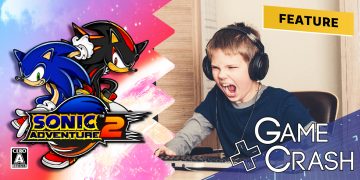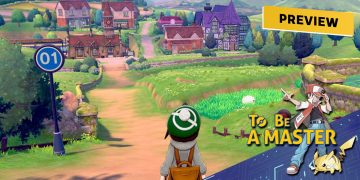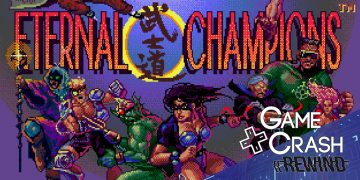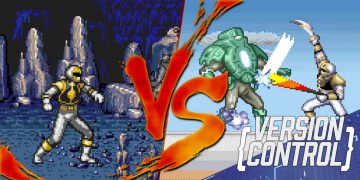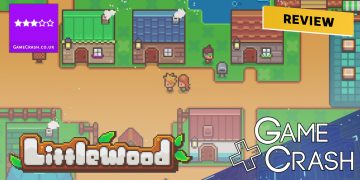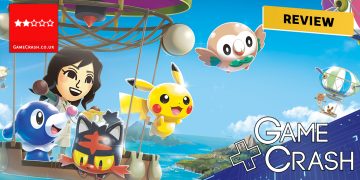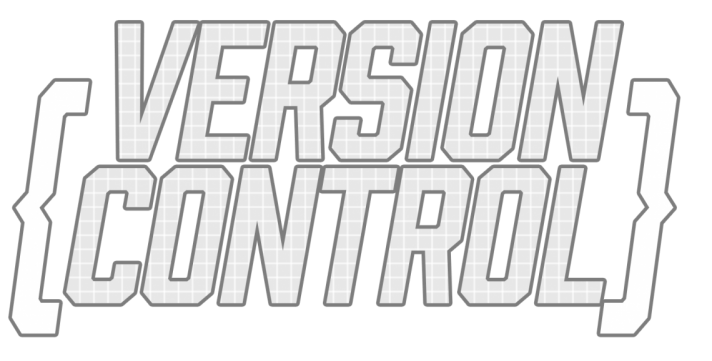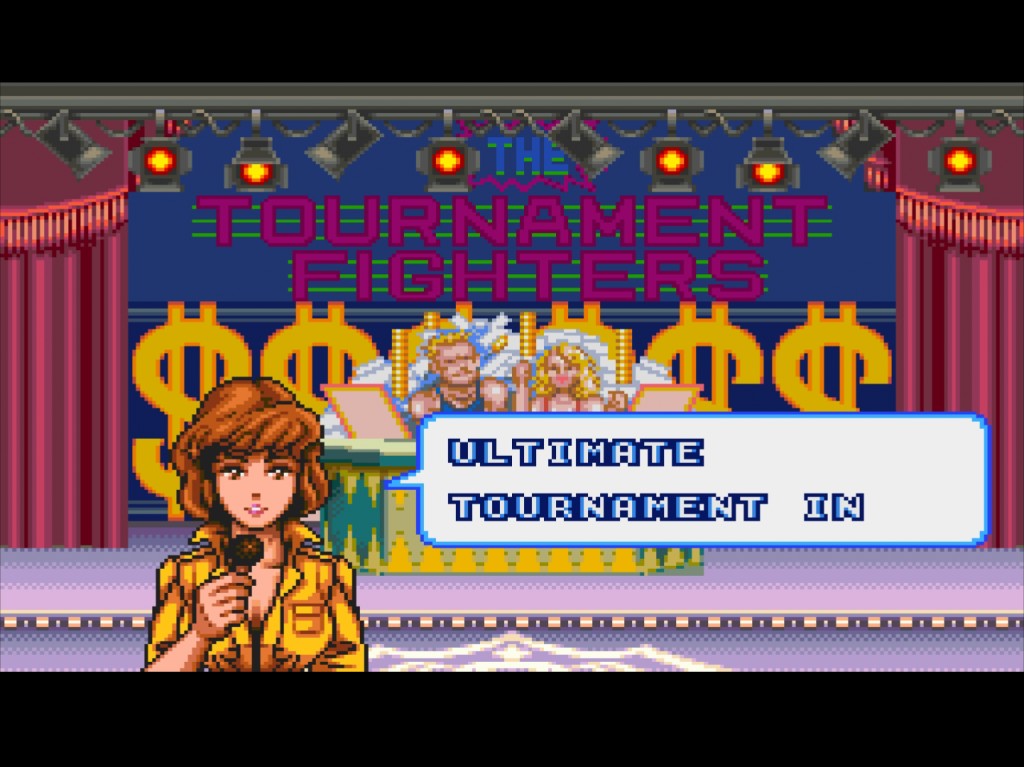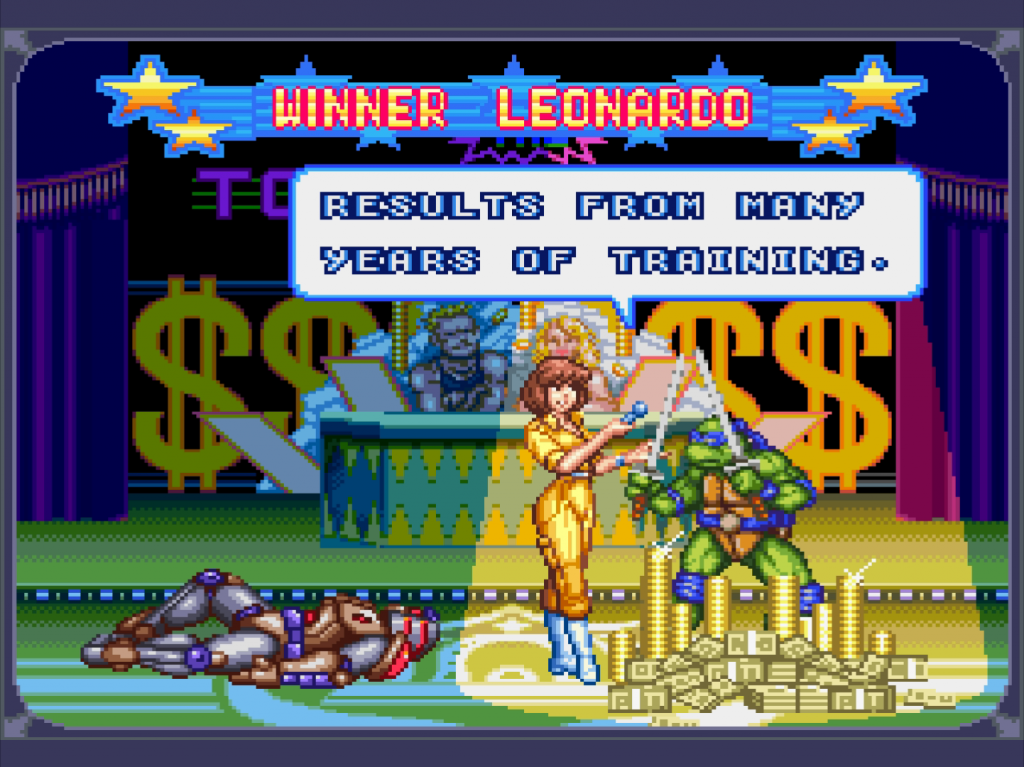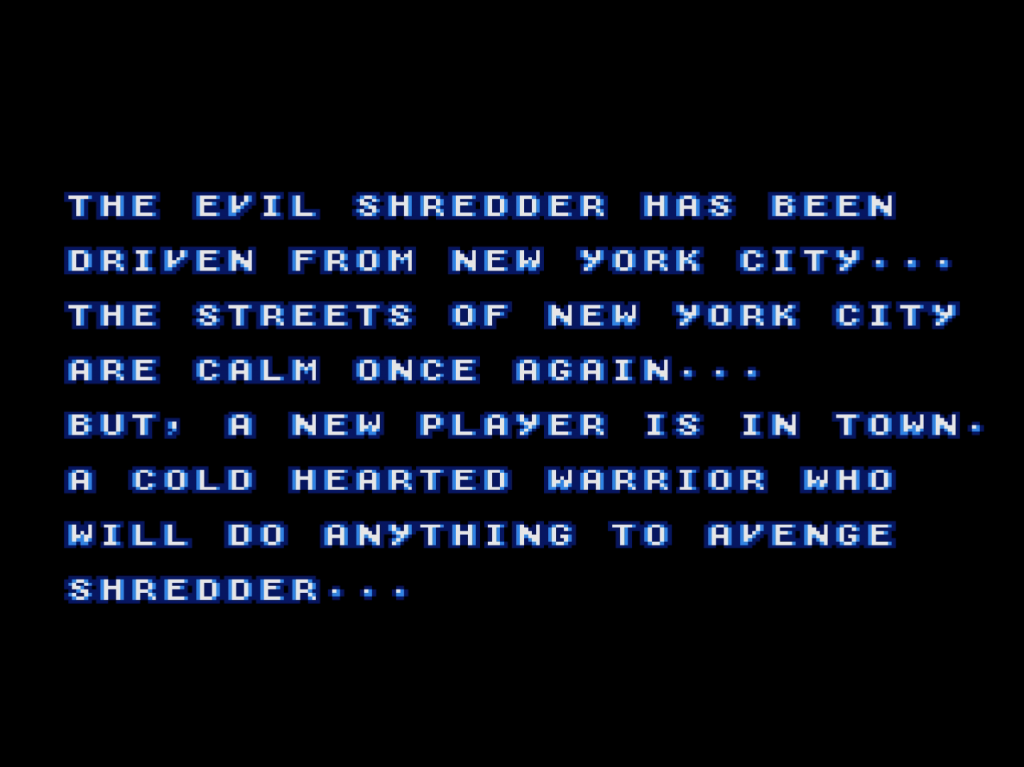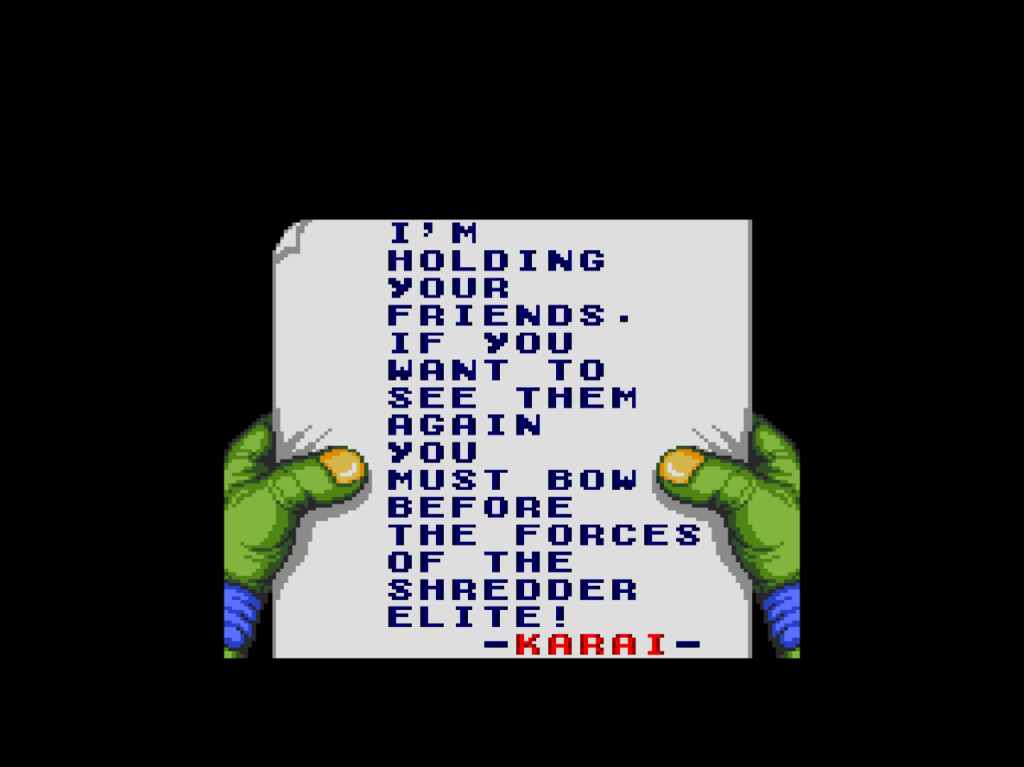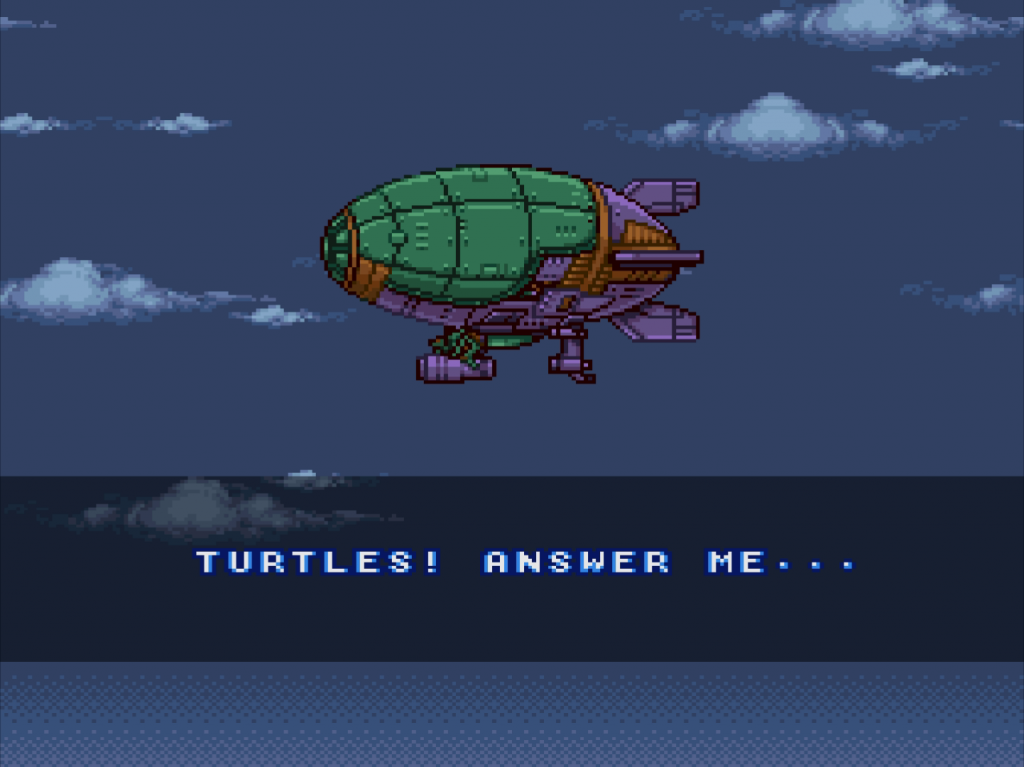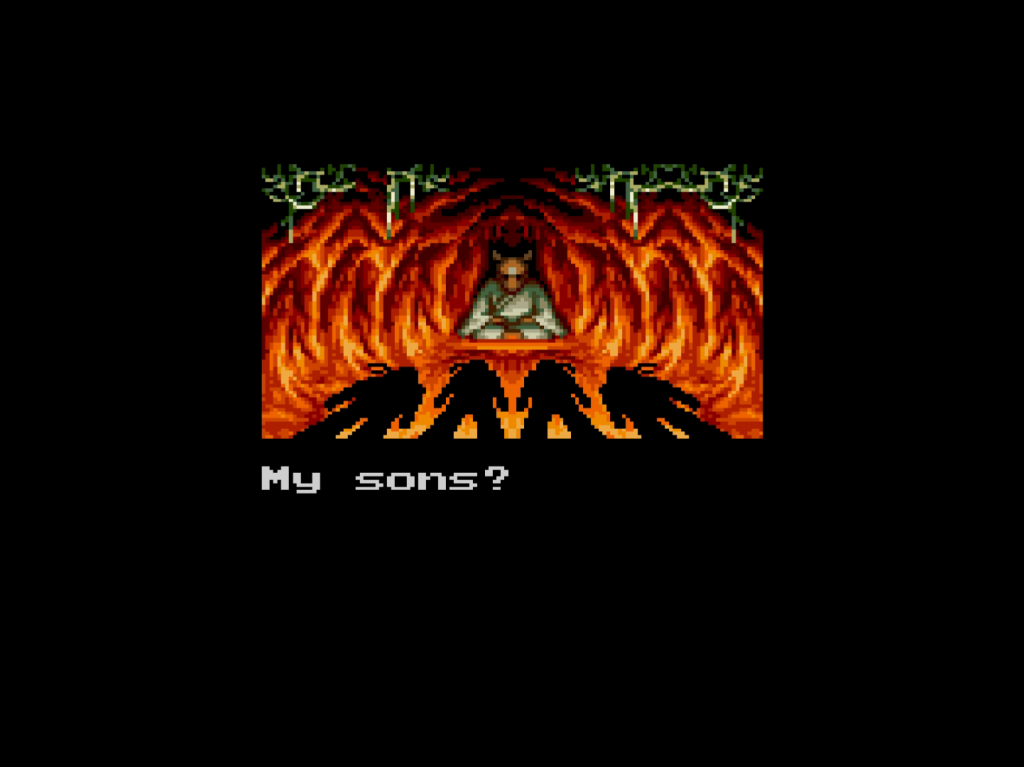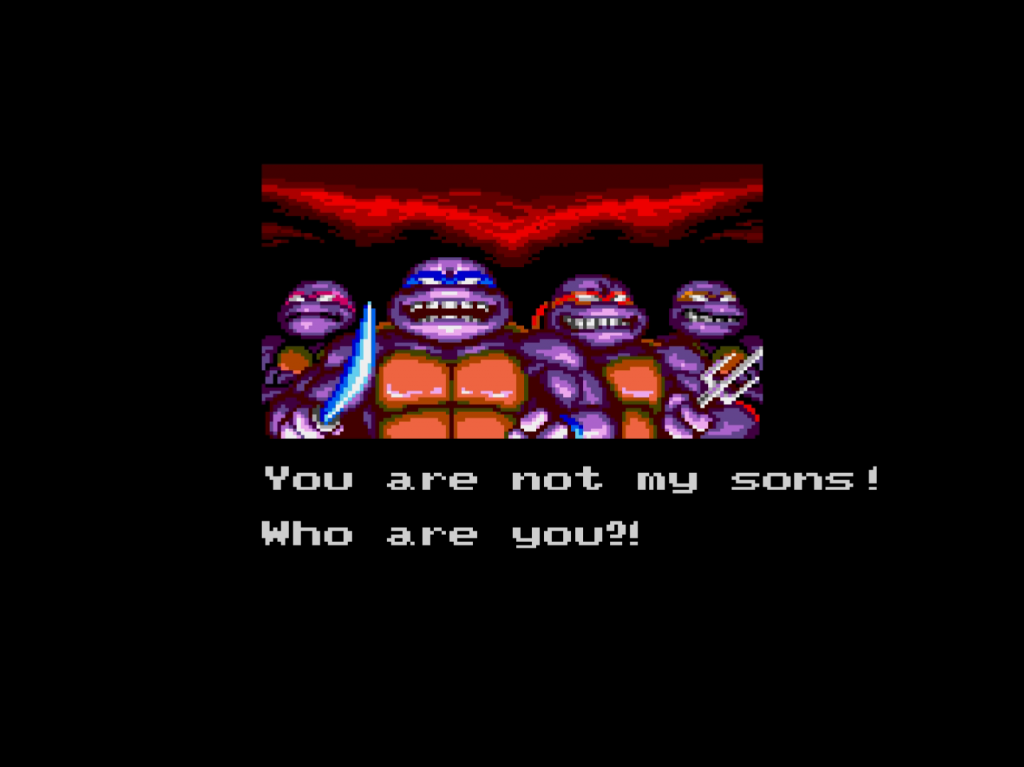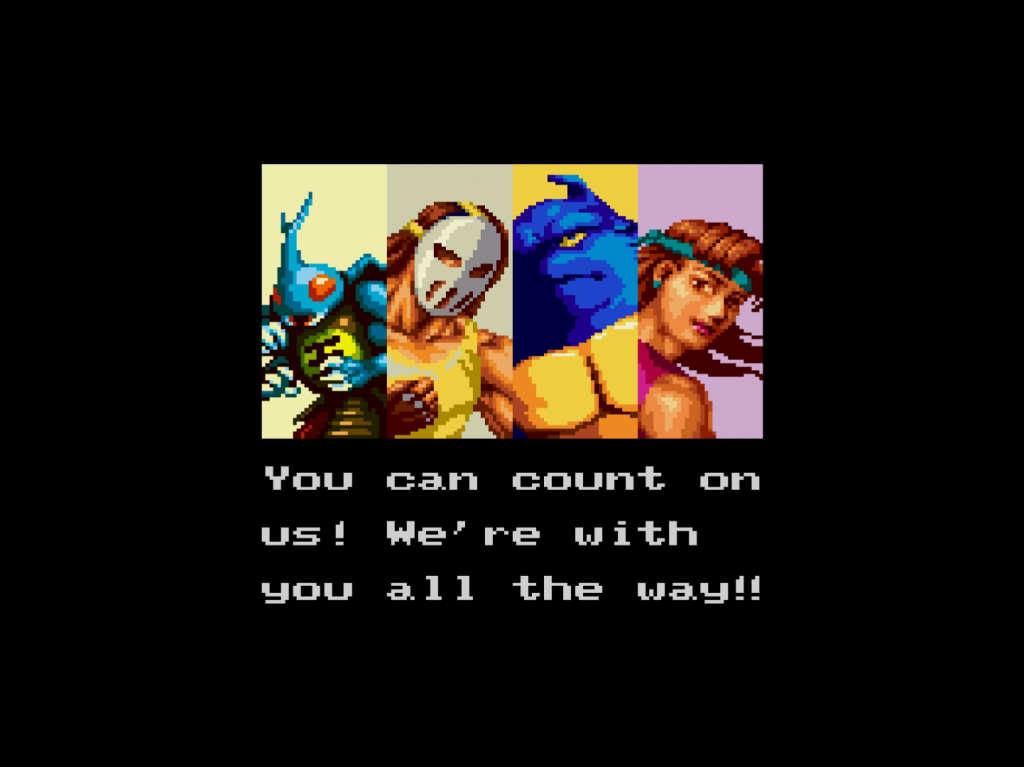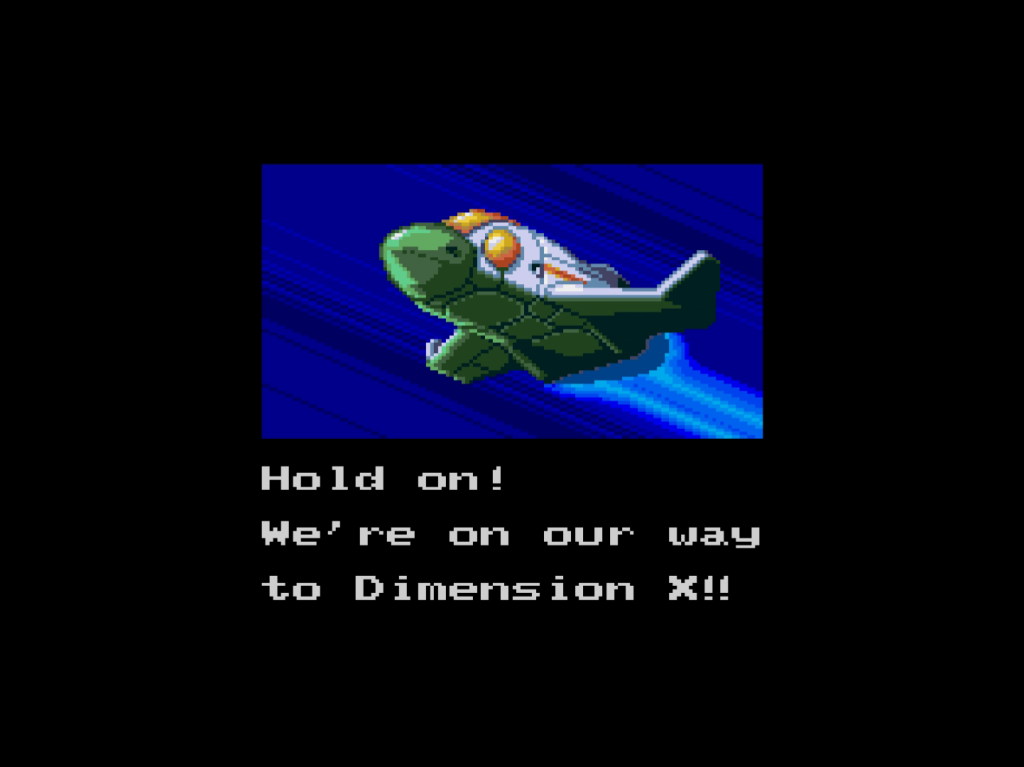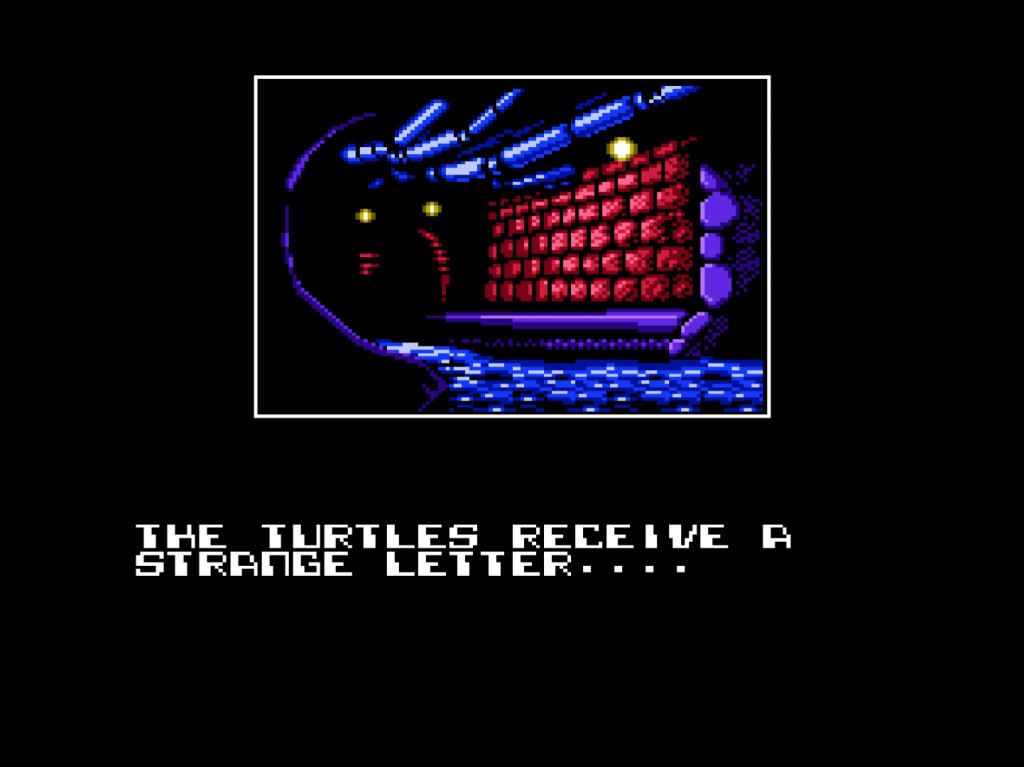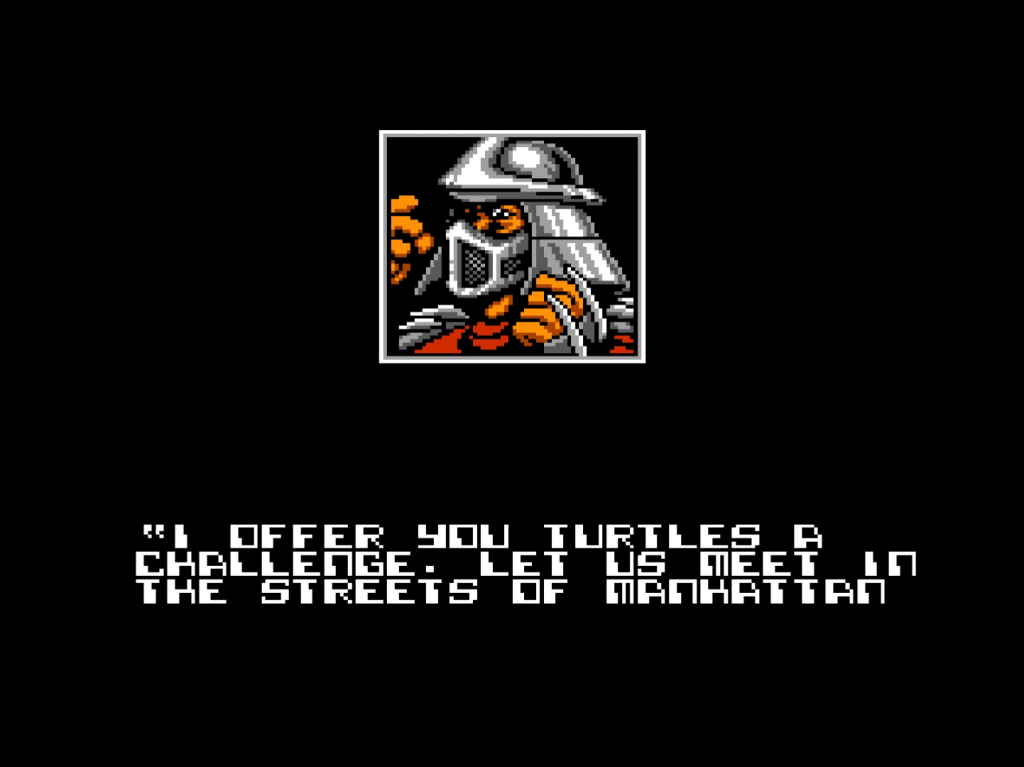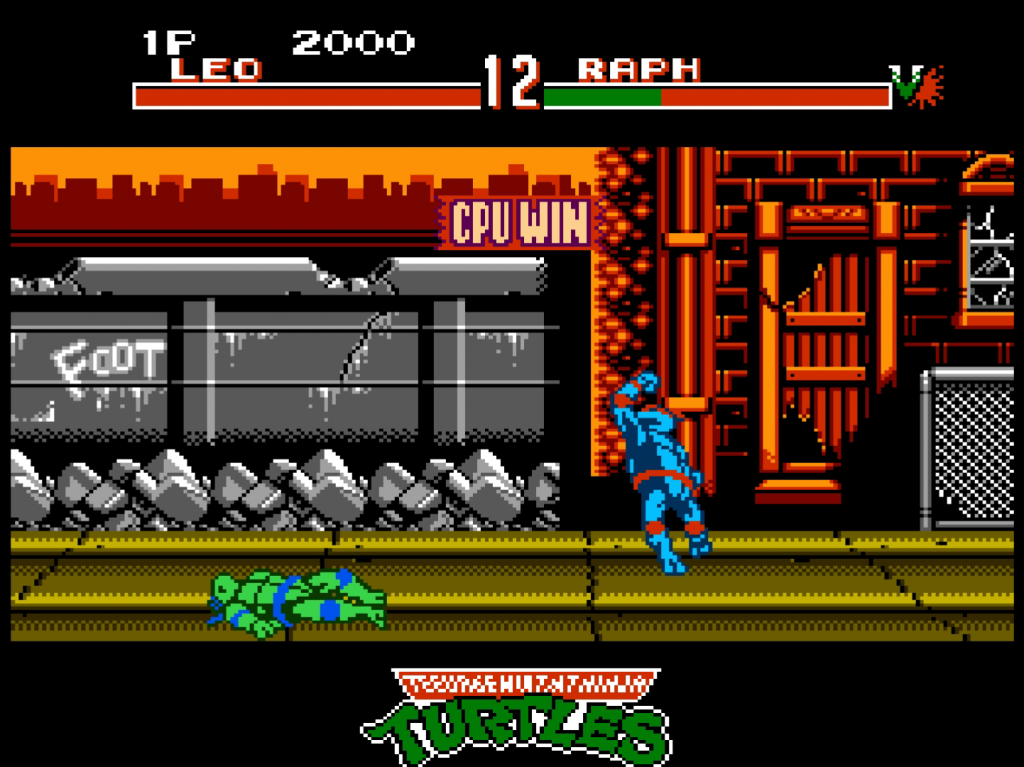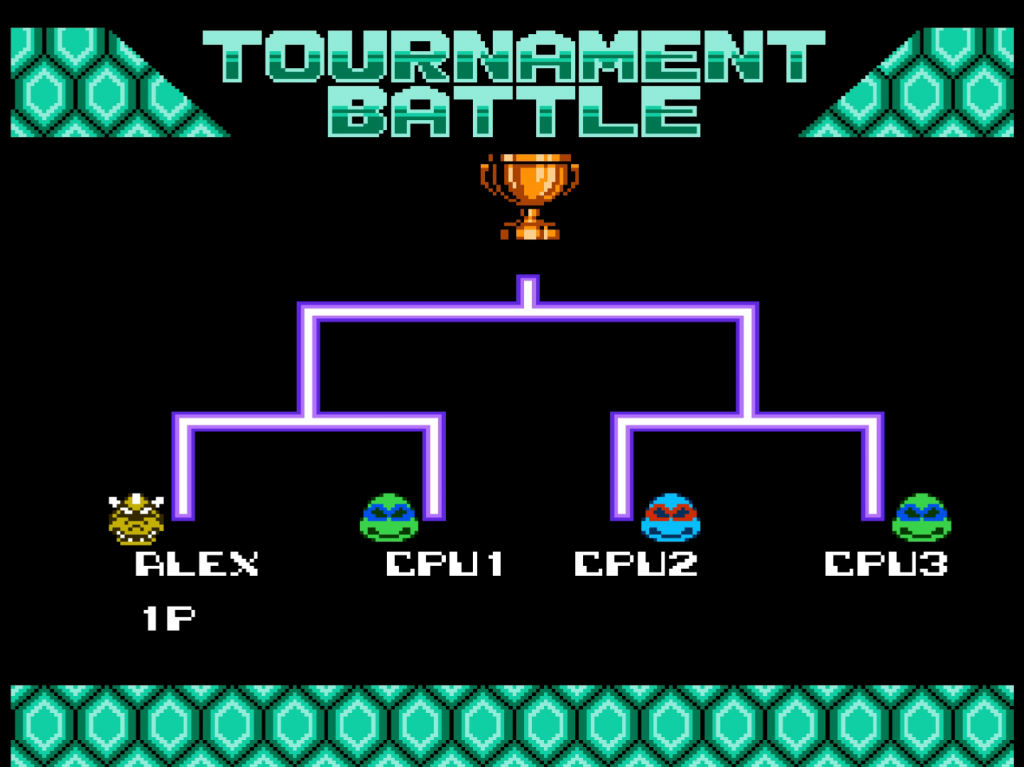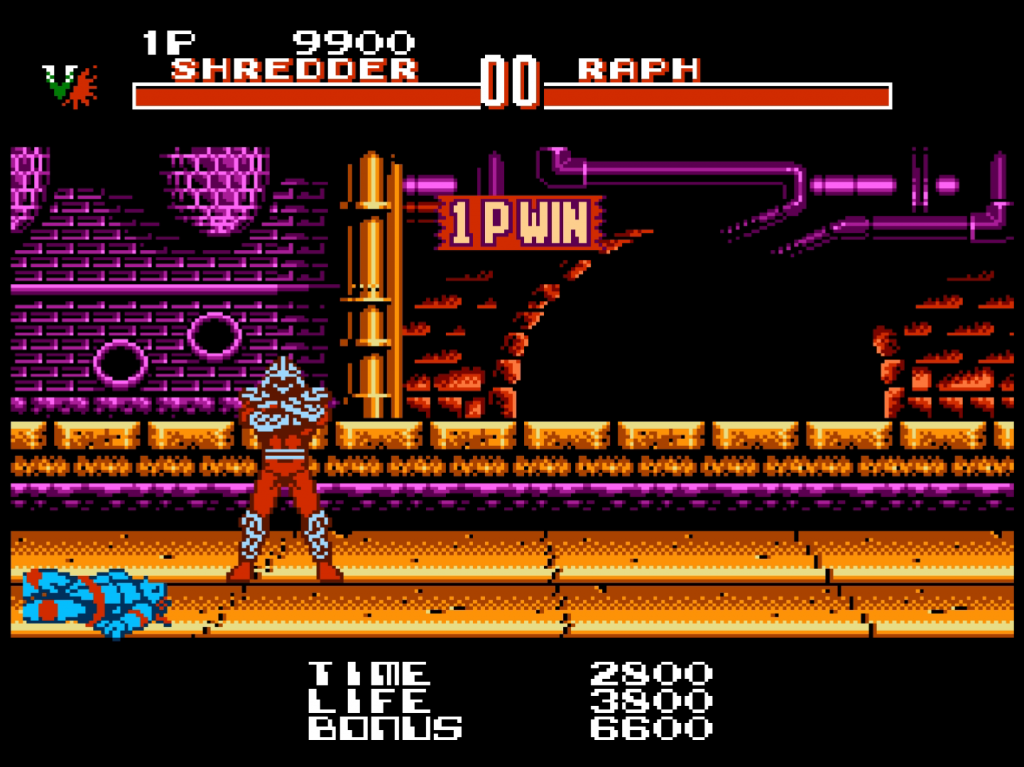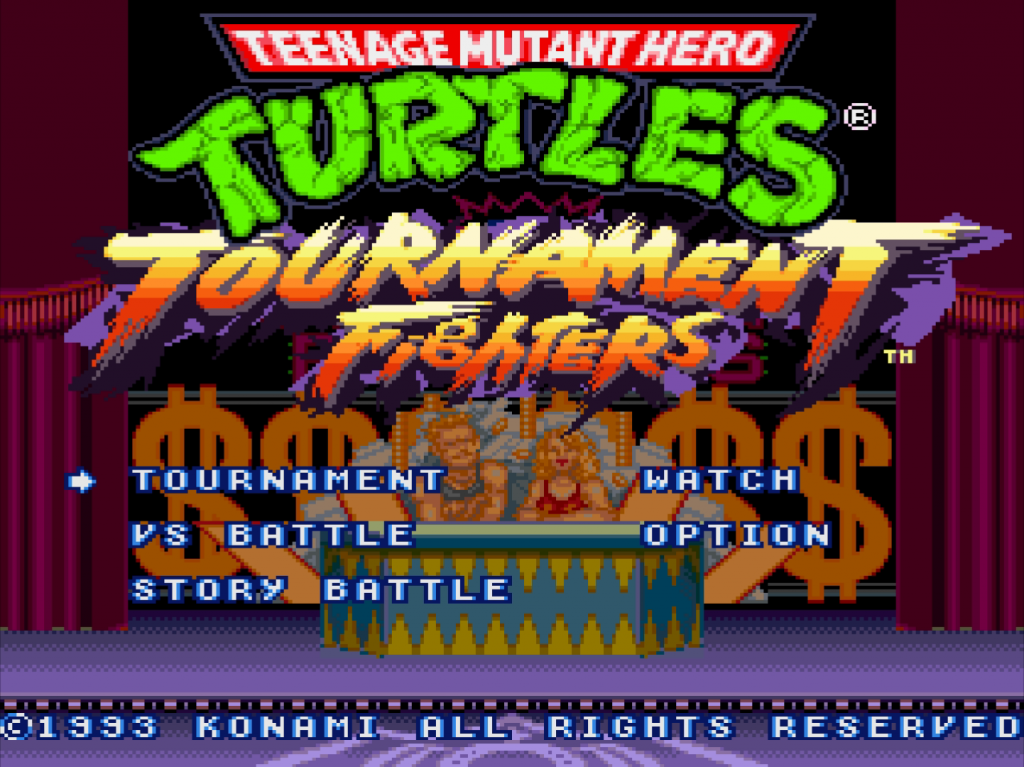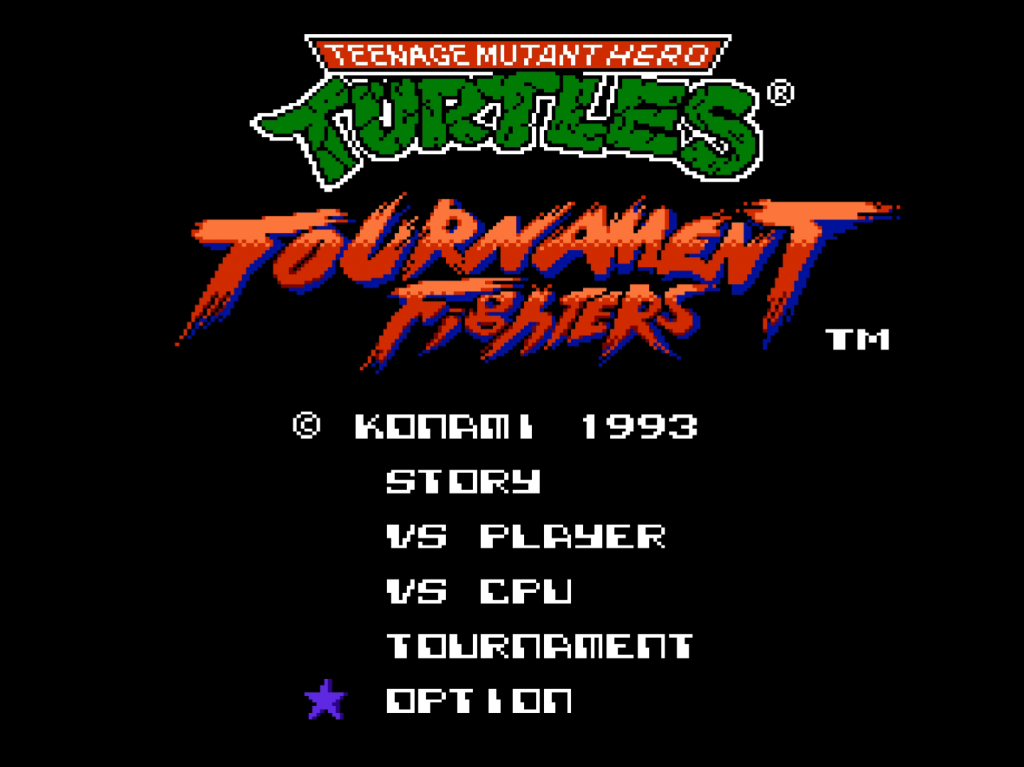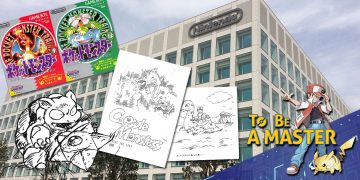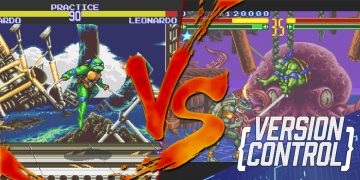Version Control is a series about digging into games that – despite effectively being sold as the same game – were entirely different depending on which platform you played it on. Perhaps the most well-known example of all is Disney’s Aladdin and the significant differences between the Mega Drive and SNES. So you’d be forgiven for thinking that we’d start there. Well, we’re not. We’re doing that next week instead (but you can read it the day this article comes out if you join us on Patreon)!
For this first entry, we’re taking a look into Teenage Mutant Ninja Turtles: Tournament Fighters. Konami developed all three versions of this one-on-one fighting game – on the NES, SNES and Mega Drive – but despite sharing a name, they were all, actually, entirely different games.
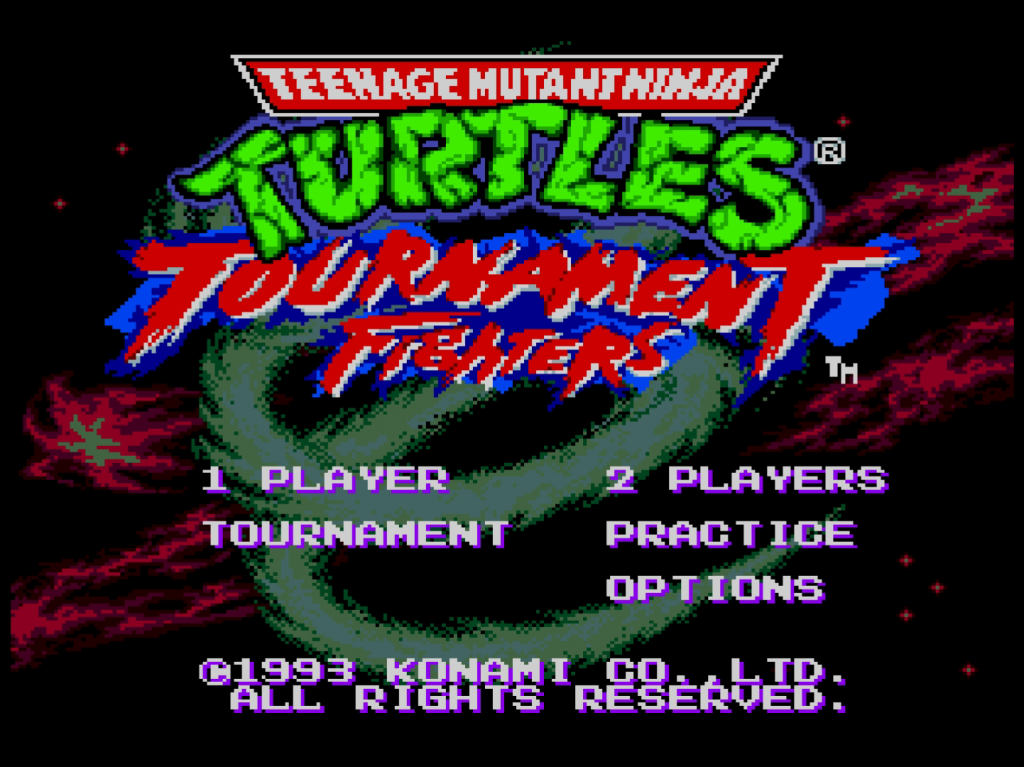
Mega Drive 
SNES 
NES
What is this game?
With the arcade release of Street Fighter II, an entire genre was effectively born overnight. A wide variety of different styles of 2D one-on-one tournament fighter games came over the next few years. You’ll know games like Mortal Kombat, Fatal Fury and King of Fighters well – but the Turtles fighting game is much less well known.
Riding high on the 90s wave of the classic cartoon and endless toy lines, the Turtles were also no stranger to the world of video games. By 1993, Konami had already made ten separate Turtles games across almost every gaming platform there was. Though they might not have known at the time, Tournament Fighters was to be their last for a decade.
Across all three versions, the basic premise is the same. You pick a character and engage in a best-of-three, 1-on-1, fight with one of the others. Plug another controller into your console, and you can beat up your friends. Each of the three games has a ‘story’ (or main single-player) mode and a ‘tournament’ mode. Aside from them featuring the Ninja Turtles, though, that’s ultimately where the similarities end. Remarkably, almost every other detail is entirely different across all three games.
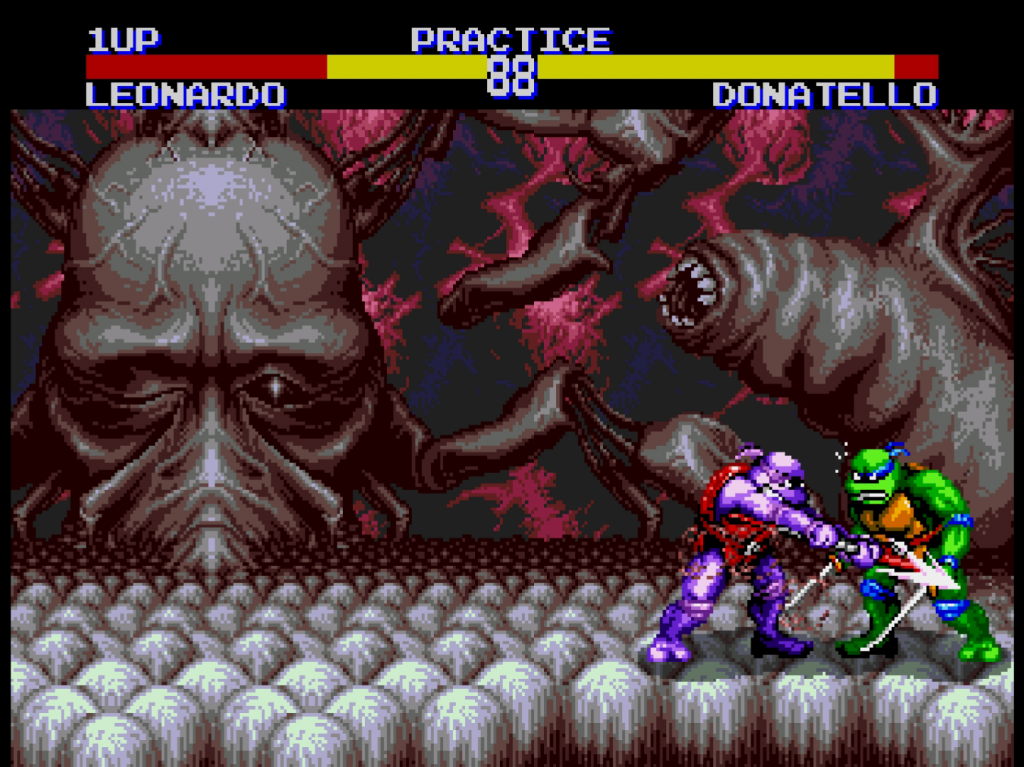
Mega Drive 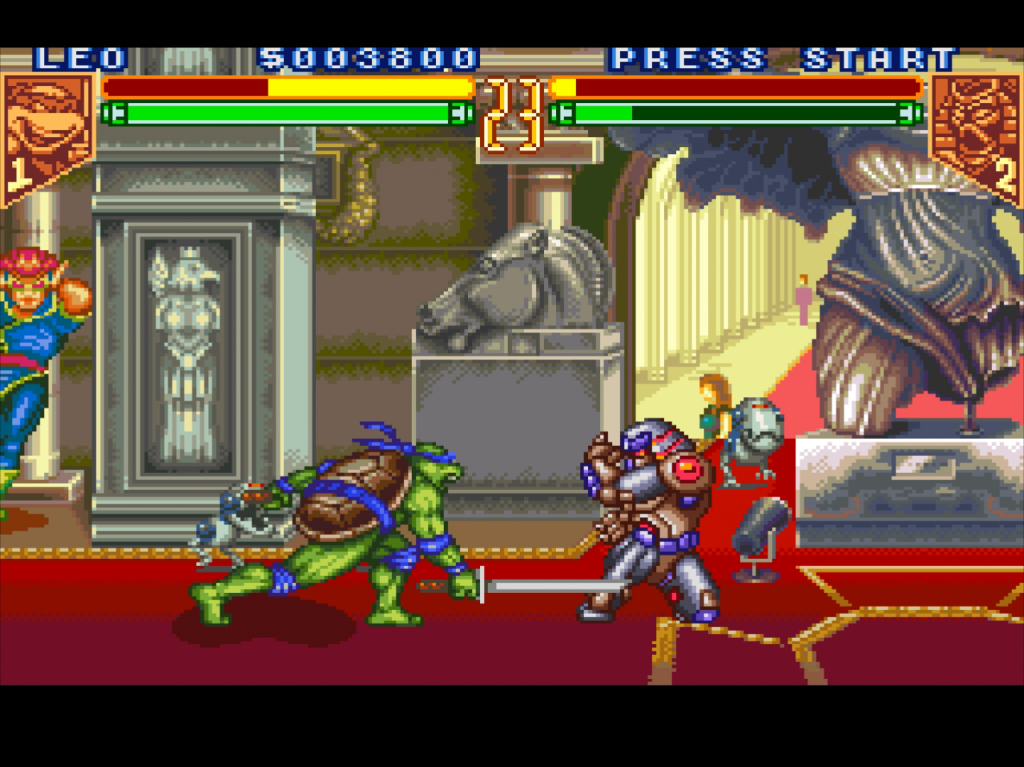
SNES 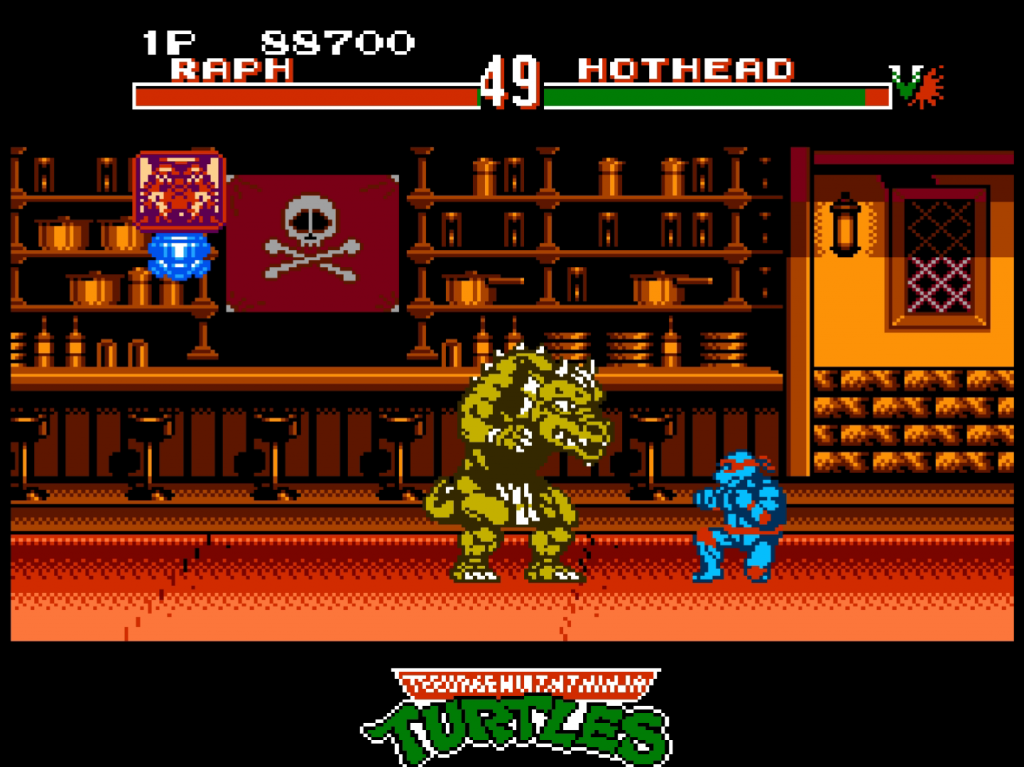
NES
The SNES version
Though we don’t know whether the SNES or Mega Drive version was the first to be developed, there’s a reasonable chance that it was the SNES one. It’s the only one of the three actually to feature a tournament, for a start.
Apparently organised by Channel 6 news, and emceed by April O’Neil, the tournament’s goal is finding the best fighter in “the galaxy” and handing them an insane amount of money for it. The setting doesn’t really seem to fit within the established Turtles series, but it doesn’t even truly matter. Although the game’s ‘Tournament’ mode dresses up a series of increasingly difficult fights in this window dressing, the ‘Story’ mode doesn’t mention it at all.
Instead, the game’s story – told through animated cut-scenes – focuses on the aftermath of the Turtles having, at some point recently, defeated their nemesis, Shredder. His daughter, Karai, has retaliated by kidnapping April and Splinter and demands the Turtles “bow before the forces of the Shredder Elite” to save them.
Taking off in the Turtle blimp – yes, they really had a blimp in the 90s cartoon – the Turtles head off in search of this ‘Shredder Elite’, coming up against a range of foes in the process. Iconic Turtles enemies such as… shark guy and… er… kinda cyborgy robot guy.
At this point, it’s worth highlighting one other small thing the three versions of this game share. Their rather bizarre character rosters. The four Turtles appear across all versions, but the rest of the selection is pretty questionable.
The SNES version adds Armaggon, the shark man; Wingnut, a utility-belt toting bat, Chrome Dome, a robot that vaguely looks a bit like Shredder; Aska, a pretty normal looking woman fighter; and War, a big purple alien monster thing. While Armaggon, Wingnut and War all appeared in the American Archie comics based on the Turtles at the time, the only of these characters to appear in the cartoon that most people would be familiar with is Chrome Dome. Though he was hardly a memorable, major foe…
Aska, meanwhile, is entirely unique to this game and honestly just seems like she got lost while on the way to an altogether different fighting game.
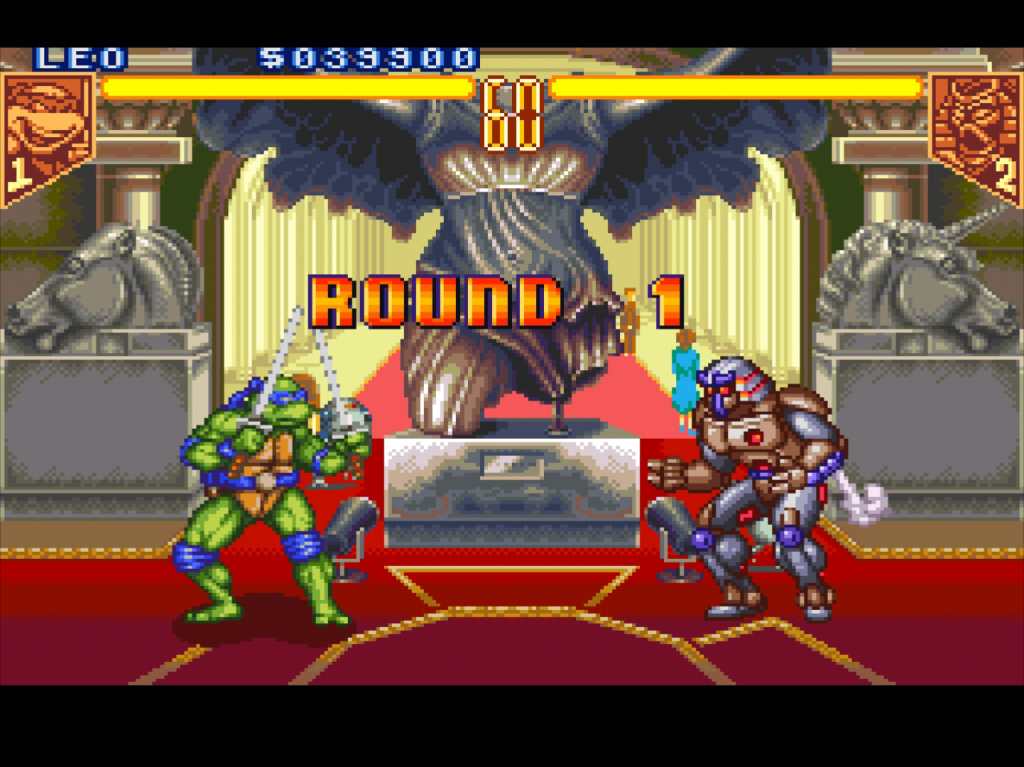
Chrome Dome 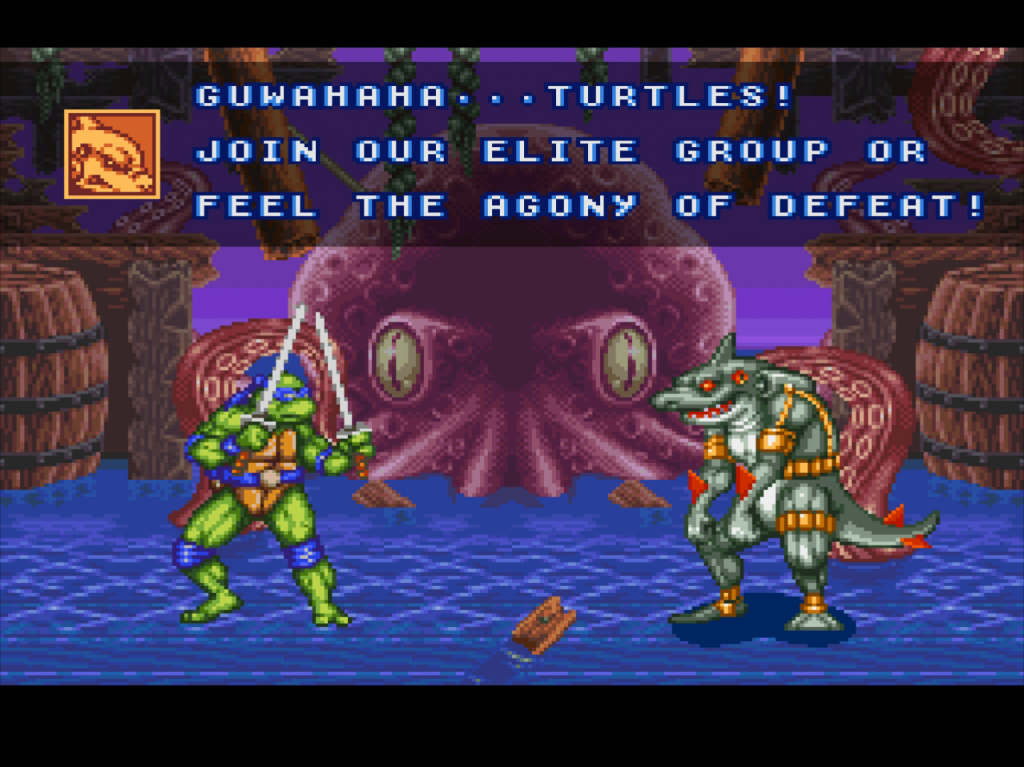
Armaggon 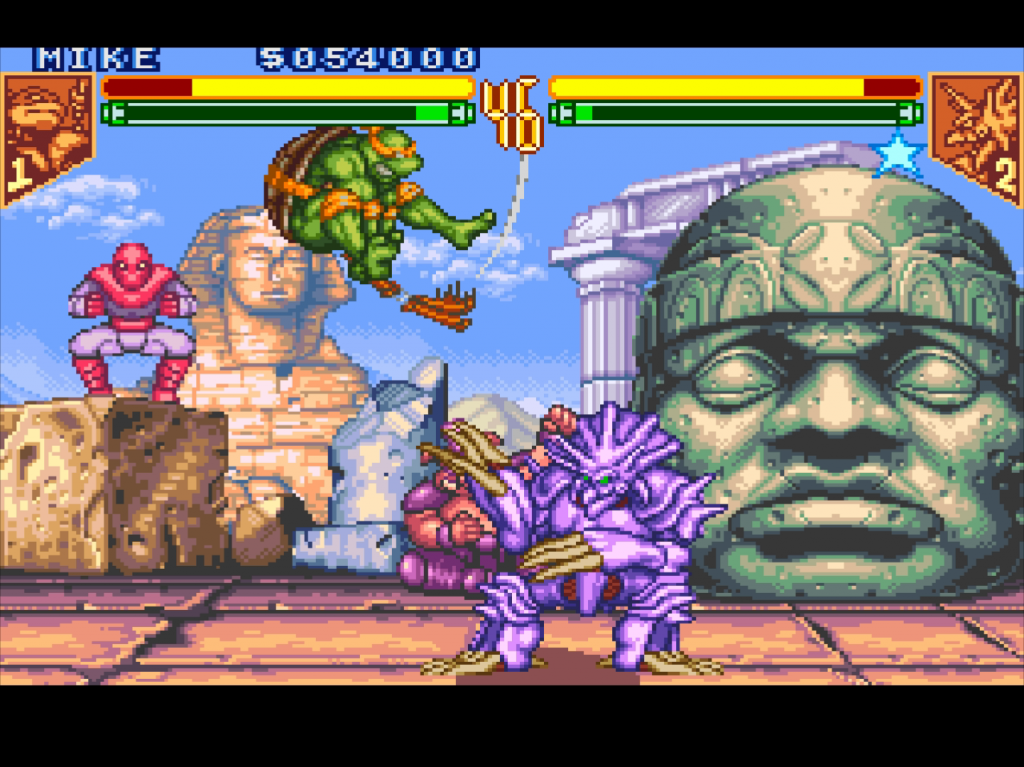
War 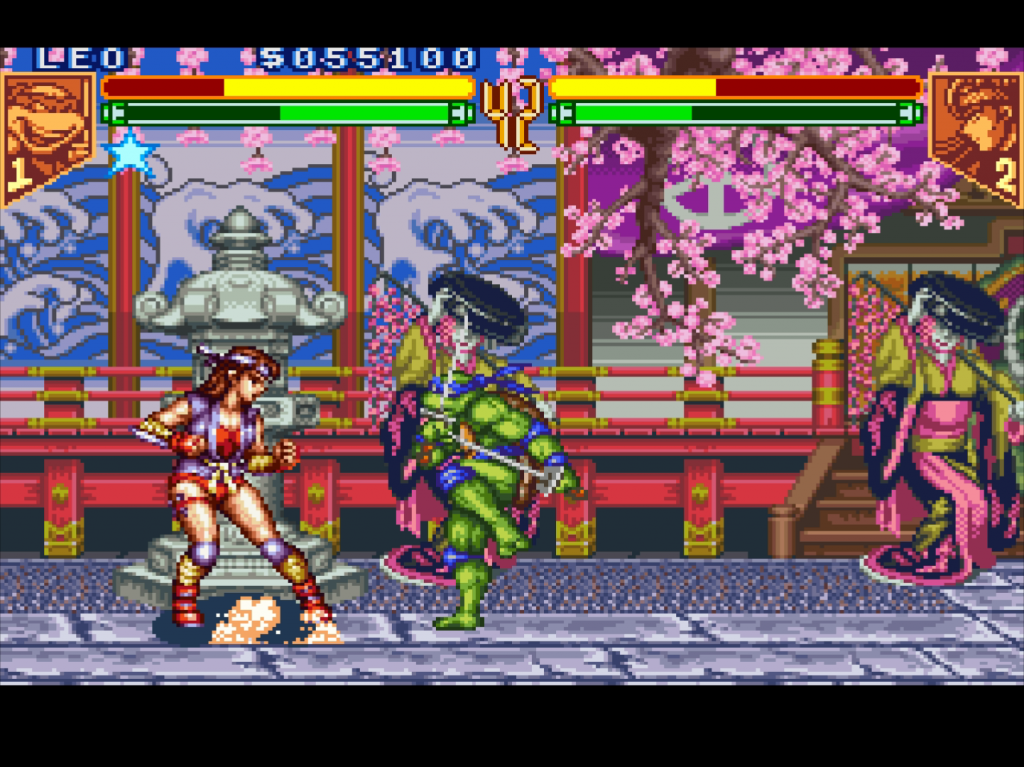
Aska 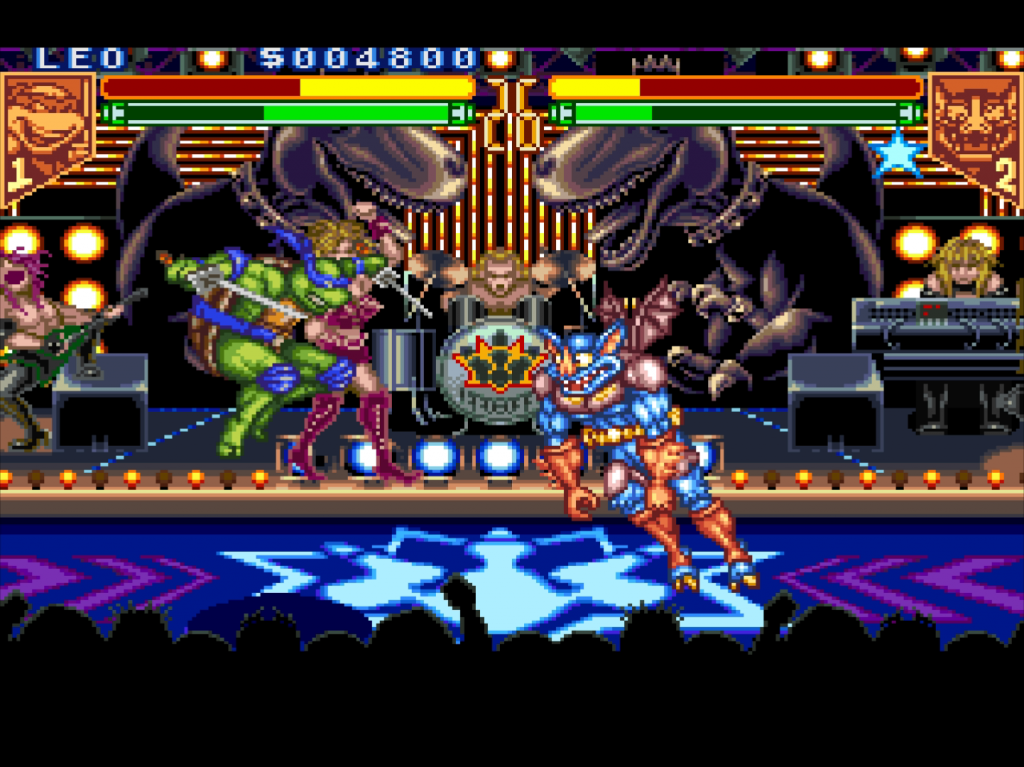
Wingnut
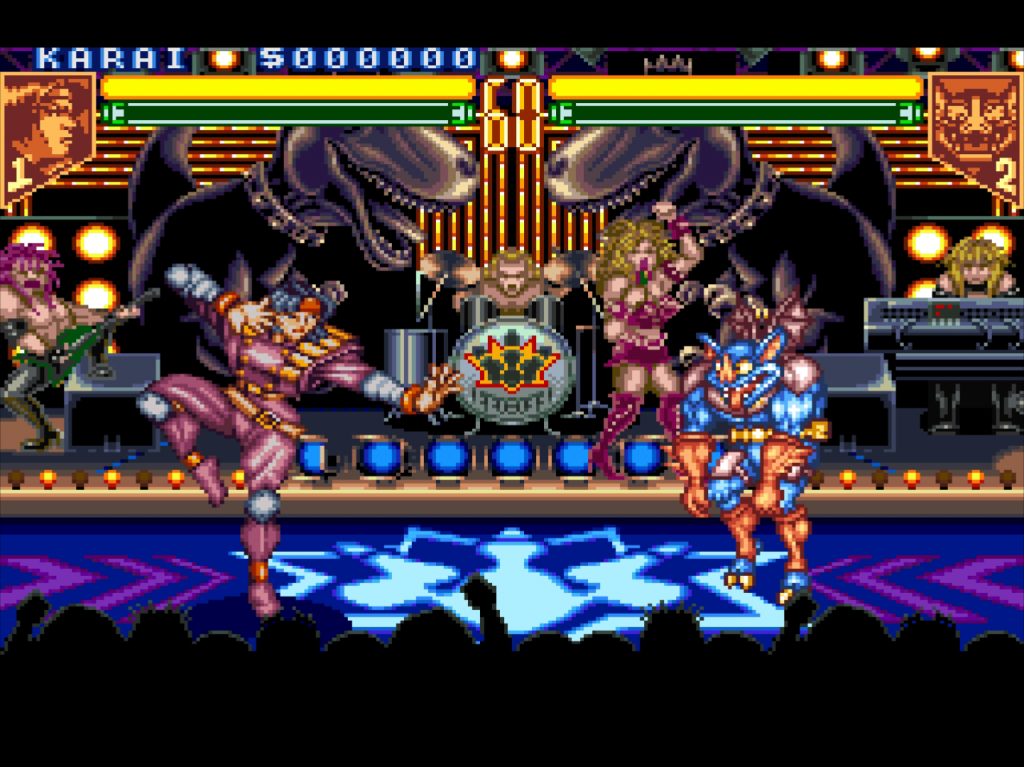
Karai 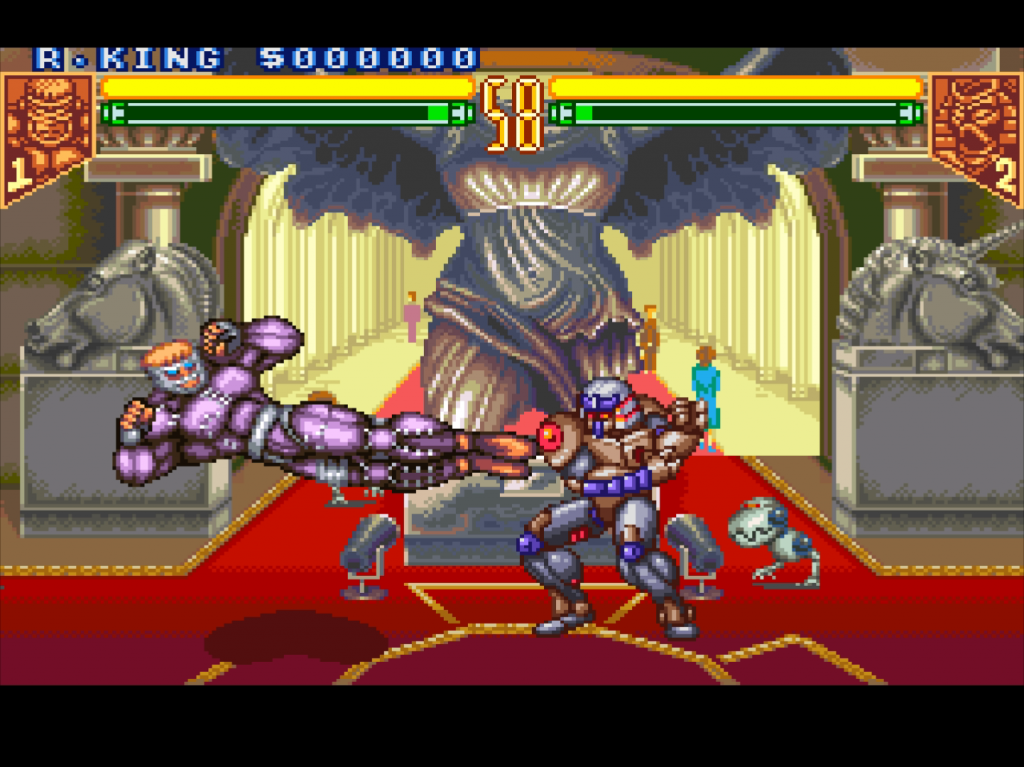
Rat King 
Does he really need a caption?
None of the games includes characters like Bebop and Rocksteady, although they do make a background appearance within a stage in this version. Even the original Mirage comics aren’t particularly well represented, although Karai and the Rat King do appear as boss and secret unlockable characters here, alongside Shredder himself.
The controls on the SNES version features low and heavy punches and kicks mapped to each of the four face buttons. In the multiplayer and Tournament modes, a powerful special move energy bar fills up throughout the match that can be activated by pressing the heavy punch and kick buttons together. For whatever reason, this bar has been removed for the Story mode, so those special moves cannot be used in it.
Familiar Street Fighter inputs will get you pretty far across all three games. A quarter-circle forward on the d-pad combined with a punch will cause Leonardo to use an Hadouken-style attack, for example. Raphael, meanwhile, pretty much outright steals M. Bison’s Psycho Crusher. The moves are all different across the three versions – though the SNES and Mega Drive versions do share a handful of them across the Turtles in particular.
The Mega Drive Version
In this version of Tournament Fighters, Splinter is once again kidnapped. This time by evil clones of the Turtles under the orders of Krang. These evil Turtles clones also feature in the SNES version as both the alternate colour for the characters in mirror matches and within the story mode. But this time they’re given a sort of implicit origin story as being the creations of Krang.
There’s no real tournament in this game. Instead, Krang lures the Turtles and four of their friends into Dimension X to fight clones of themselves. Casey Jones and April herself join this fight in this game, but the additional characters are again somewhat strange choices. Sisyphus, a beetle character created exclusively for this game joins Ray Fillet, an anthropomorphic Manta-Ray, from the Archie comics.
On top of this are the boss characters: a Triceraton warrior, Krang himself and, once again, Karai. Oddly, although shown as playable on the back of the game’s box, the boss characters can only be played as using cheat codes. They even have full move sets programmed into the game – it just seems that at some point in development, Konami removed the ability to unlock them.
While the SNES version’s stages take place across a range of locations on earth, the Mega Drive takes place across a variety of bizarre alien worlds. The backgrounds in this version are therefore much crazier – some are nearly Lovecraftian, even.
Visually overall, the two versions of the game are starkly different. There’s a much darker palette at work in the Mega Drive version, and the character sprites are bigger with much slower, chunkier animations. Either style, individually, would be great for any Turtles game, but the SNES version perhaps is more “on brand” with the franchise of the time. The Mega Drive version’s bright white eyes and grimacing faces lean much more heavily towards the original comics than the cartoon.
Perhaps the most significant difference in the Mega Drive version, though, is the sheer difficulty of the game’s single-player mode. The odds are stacked against you from the outset as even just a couple of shots from your opponent are enough to wipe you out entirely. The AI even seems to be able just outright to hit harder than you can, and it absolutely doesn’t mess around. Don’t expect to be able to lame matches out with projectile or move spamming – it just won’t work.

Triceraton 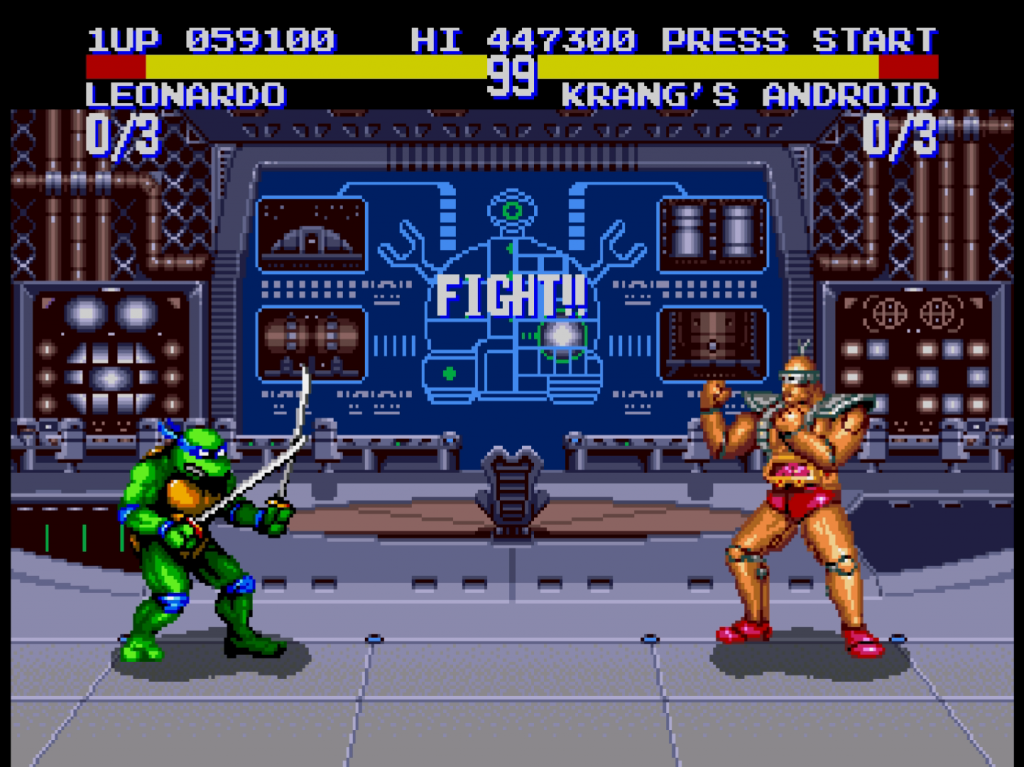
Krang 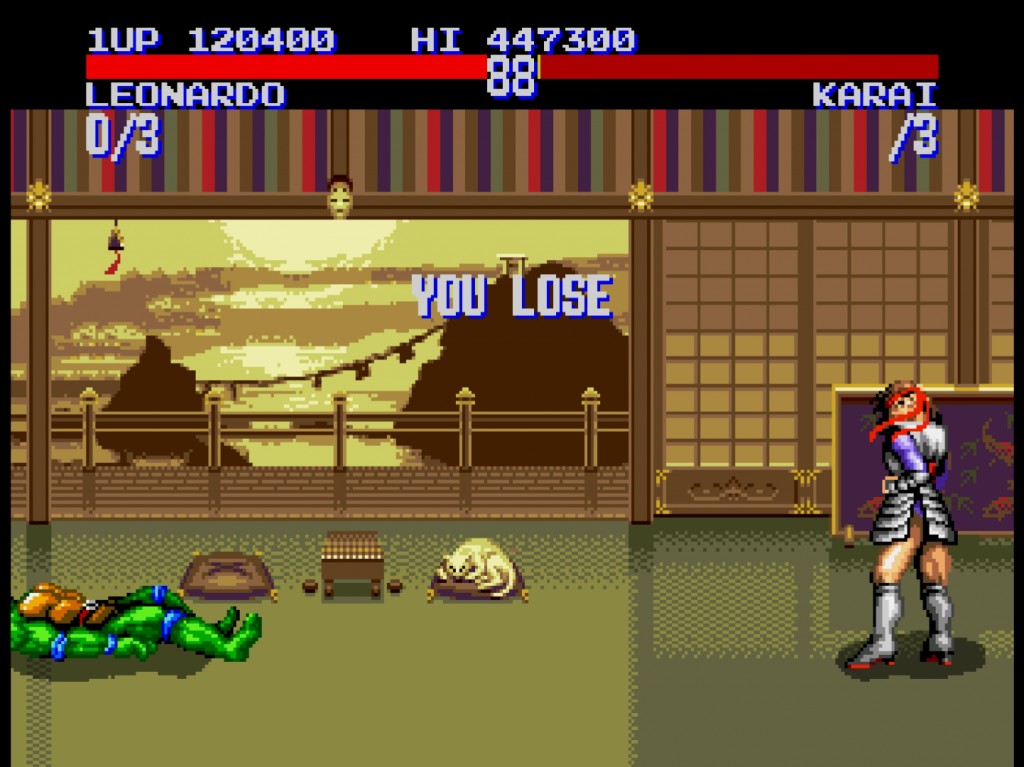
Karai 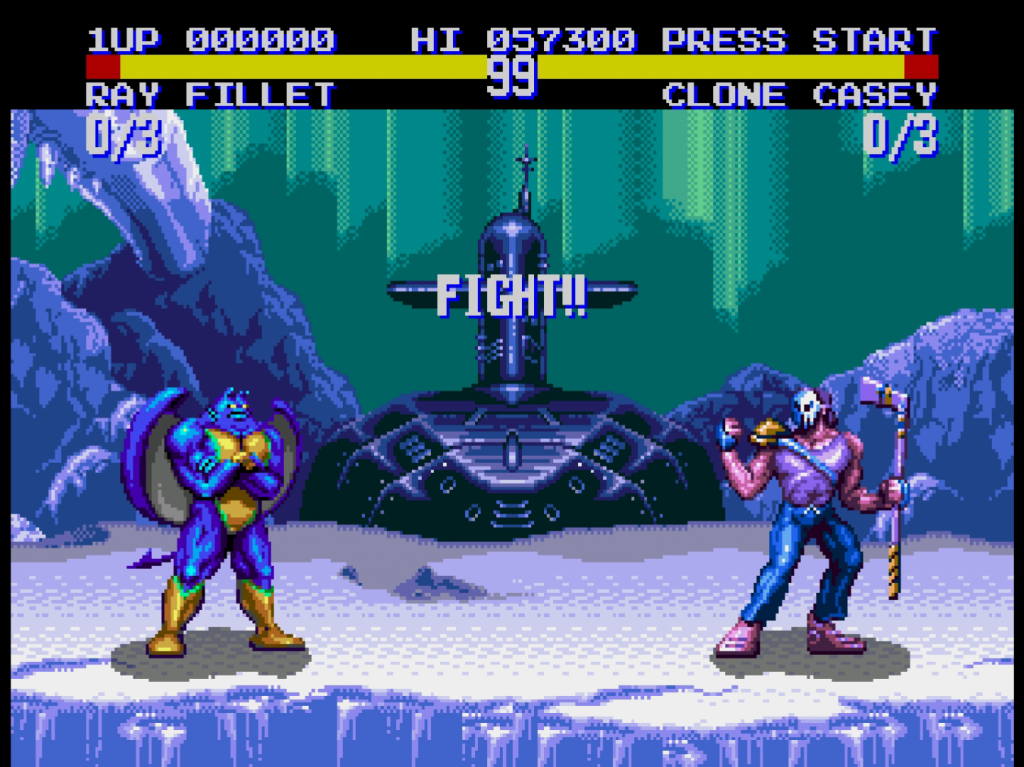
Ray Fillet vs Casey Jones’ clone 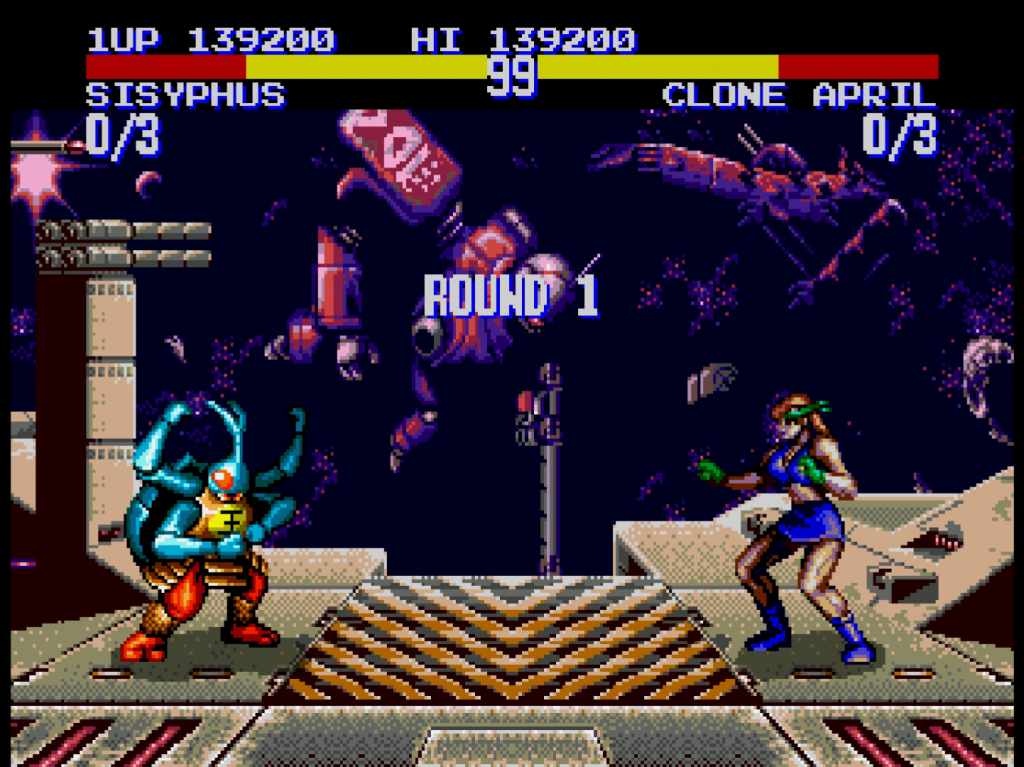
Sisyphus vs April O’Neil’s clone
The one saving grace you’ll have in your arsenal is the game’s desperation move mechanic. This complicated move can only be activated when your character is close to being defeated and requires using the game’s taunt button. So, cock it up, and you’ll almost definitely get knocked out. Pull it off, though, and it’ll take so much of your enemy’s life bar away you’ll probably win the match.
For whatever reason, April and Casey have their own button combo for this desperation move. Even though every other character – including the Triceraton you can’t actually play as – uses the same, reasonably complex, button combination for theirs. Casey’s move being the easiest to pull off, along with an almost game-breaking reach thanks to his hockey stick makes him the most overpowered character in the game and thus, virtually mandatory for the story mode. Not to mention earns him an immediate ban from your brother being allowed to pick him.
The Mega Drive version’s music is perhaps the most interesting out of the two. The SNES’s soundtrack is very upbeat and jazzy – but isn’t very different from stage to stage. The synths and bass notes of the Mega Drive version feature somewhat differently across the game, and it helps to give each stage something of its own identity. Sadly, it’s ruined entirely by the fact all of the sound effects in this version of the game sounds like someone’s farting into a cloth.
Finally, as well as the main single-player and multiplayer modes, the Mega Drive Tournament Fighters includes its own spin on the Tournament mode. In this version, it’s an 88-character gruelling survival mode slog. Quite why it’s 88 characters will remain as much of a mystery for all time as to why anyone would bother to put themselves through that, to begin with.
The NES Version
Finally (ish), we have the NES version of Tournament Fighters. Despite being for the older Nintendo system, this version actually came out months after the 16-bit versions. In fact, it seems to have been the last NES game Konami ever published. It also makes this version the final classic Turtles game Konami made and published, too.
Once again, the game is fundamentally wholly unique. The story in this version of the game simplifies the “tournament” down to merely being a challenge from Shredder himself to take to the streets and fight him. To begin with, the Turtles fight amongst each other to determine the strongest. Followed by a fight with Casey Jones, then a fire breathing dragon called Hothead – ostensibly created for this game but somewhat based off of one of the series’ action figures – and finally, Shredder. There are no other characters in the game, but perhaps given the state of the other rosters, that’s not such a bad thing.
The NES release has a unique mechanic that sees a flying TV screen featuring Splinter’s face appear and drop what seems to be a dodgeball into the arena mid-fight. Either fighter can then pick this up and use it as a powerful projectile. Why it’s in the game, or why it involves floating TVs or Splinter is literally anyone’s guess. But, it’s not entirely unwelcome given that the game’s two-button fighting is otherwise quite basic.
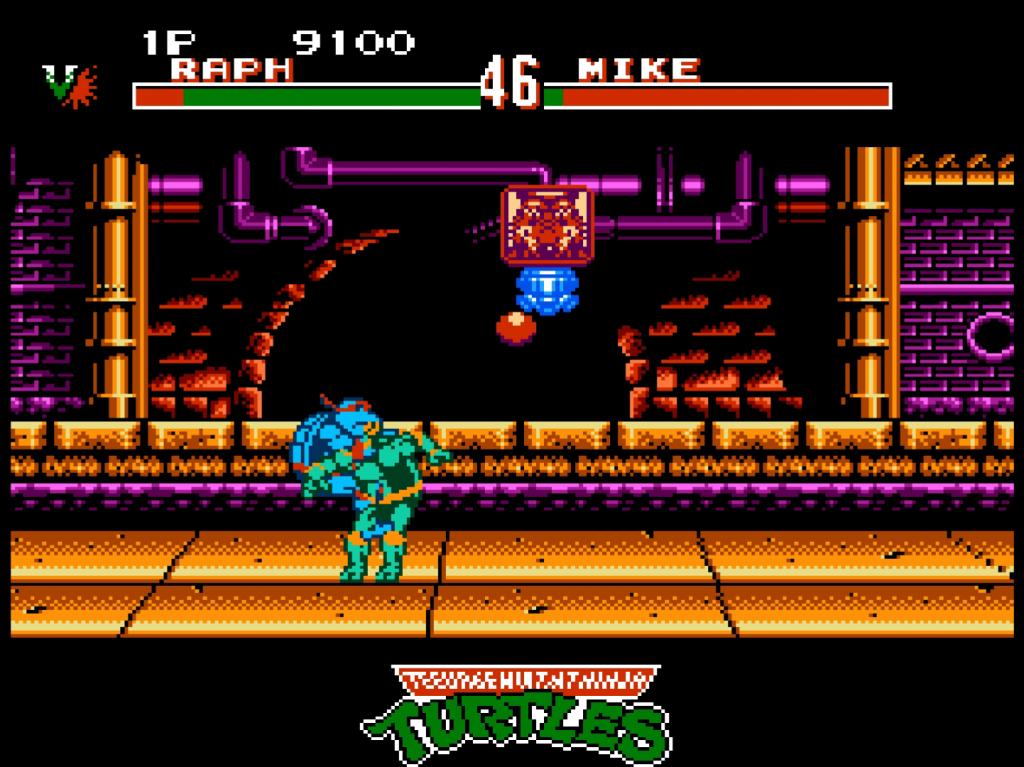
The random but helpful ‘dodgeball’ mechanic 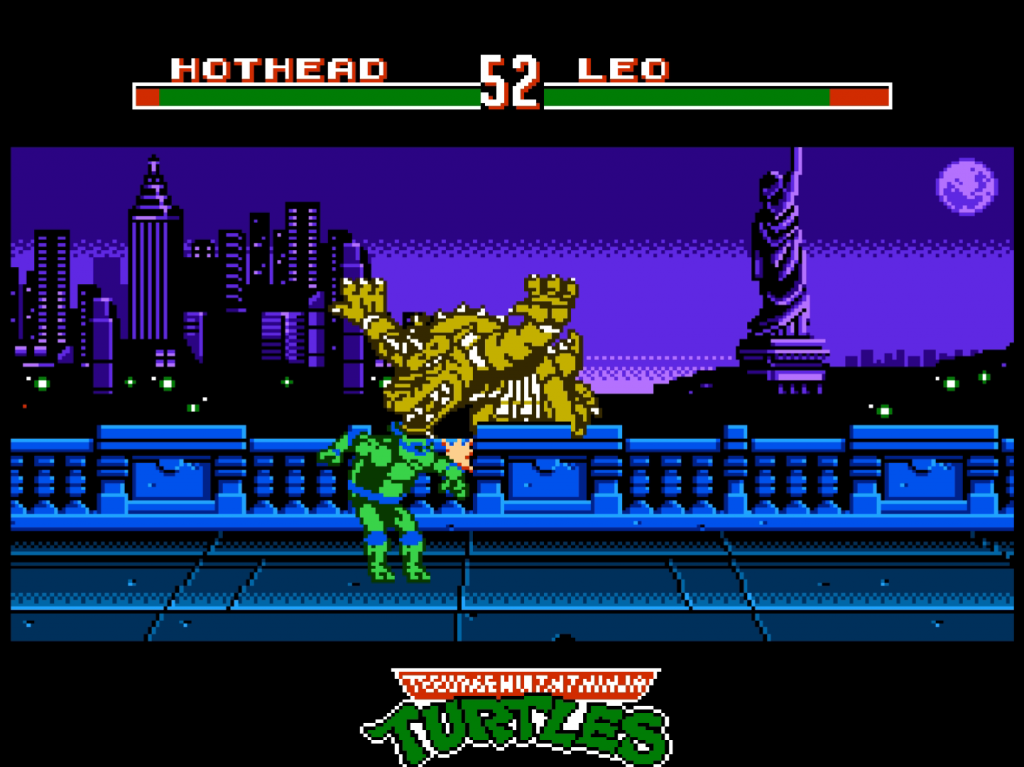
Hothead 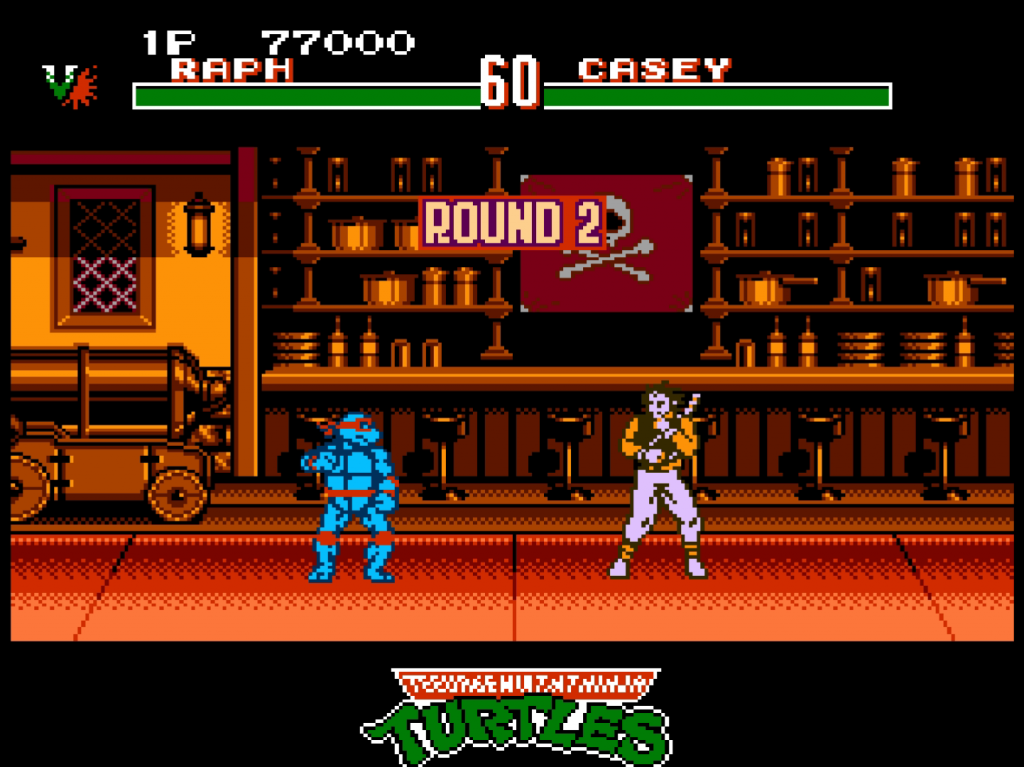
Casey Jones
In this version – although each Turtle does have different moves and animations – they are still ultimately the same recoloured sprite. In particular, that means that none of them has any weapons. While Casey, Hothead and Shredder are all well rounded with personalised attacks, robbing the Turtles of the weapons that define them the most is almost akin to cultural vandalism. Rather than swinging his sais at his opponent, this Raphael’s primary attack is jumping onto them and biting their head. It’s lunacy.
In general, there’s just a lot less to this game than its bigger brothers. Though, that’s to be somewhat expected of an NES game, of course. It is well put together and is as solid a fighting game as you’ll find on the NES. But, most kids would perhaps have felt a bit hard done by if this was their only new game between their birthday and Christmas.
What the NES version does feature, that the other two inexplicably don’t, however, is an actual multiplayer tournament mode! This four-player bracket can either be played with four people (by passing the controllers around) or even up to four AI characters.
While it’s a welcome addition, this limited version of it belies the potential that could have been such a mode on either the Mega Drive or Genesis games.
Perhaps that is a notable metaphor for the entire Turtles Tournament Fighters experience across all its iterations. There are a lot of “missed swings” in each version. Things that could have improved the game significantly if just more thought and time had gone into it. Perhaps at least one of the variants could have stood the test of time well enough to be as fondly remembered as the Turtles arcade beat-em-ups were.
It’s not entirely clear why each release was so wholly different. But, it wasn’t uncommon at the time for totally separate development studios to make each console’s version of a given game. The free reign they had to be so wholly unique – even including creating characters within a licensed franchise – is surprising even for that period, though.
So, which is best?
In a straight shoot between the SNES and Mega Drive versions, there perhaps is only really one choice. While the Mega Drive version does have a style and weird charm the SNES game lacks, the Nintendo version is just simply a better game. The SNES Tournament Fighters‘ gameplay holds up well today – even if it doesn’t really do anything special.
It’s a pity the character roster across all three is relatively meagre, but at least the SNES one actually allows you to unlock its bosses. It also actually invokes a difficulty curve, rather than being break-your-face hard from the off.
There are reasons to play the Mega Drive version of the game, but the vast majority of them are “you only owned a Mega Drive”. In my case, that was true! And, at least I can say I can fondly remember the one (1) time I actually managed to complete the game’s punishing story mode. I’m confident I taught my younger brother at least a couple new swear words that day, but it was definitely worth it. Cowa****ingbunga, dudes.
Bonus Round: Teenage Mutant Ninja Turtles: Mutant Warriors
In Japan, the SNES version of the game was released under a different name: Teenage Mutant Ninja Turtles: Mutant Warriors. Bizarrely, this release of the game – a couple of months after the American one – improved and fixed a few things from the original.
The Turtle blimp now features the Turtles logo, and the background is brightened up. Some of the character portraits are different, while Aska’s design and animations are changed to focus more on her breasts and ass. Because, of course it is. Thanks, Japan.
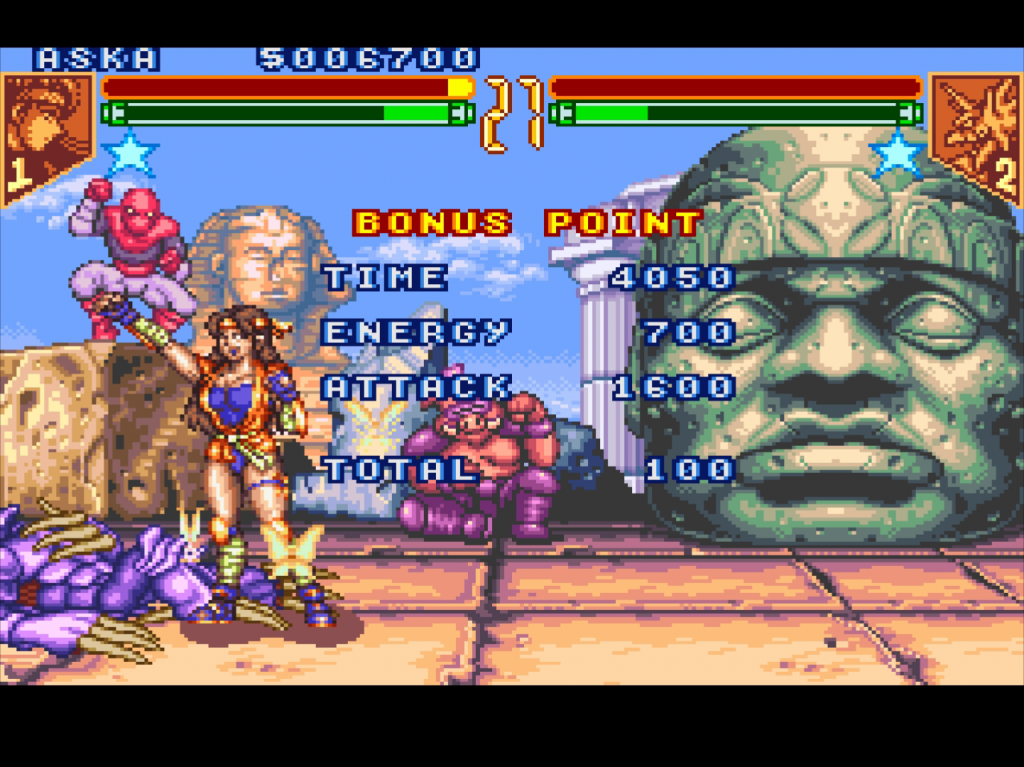
Japanese winning animation 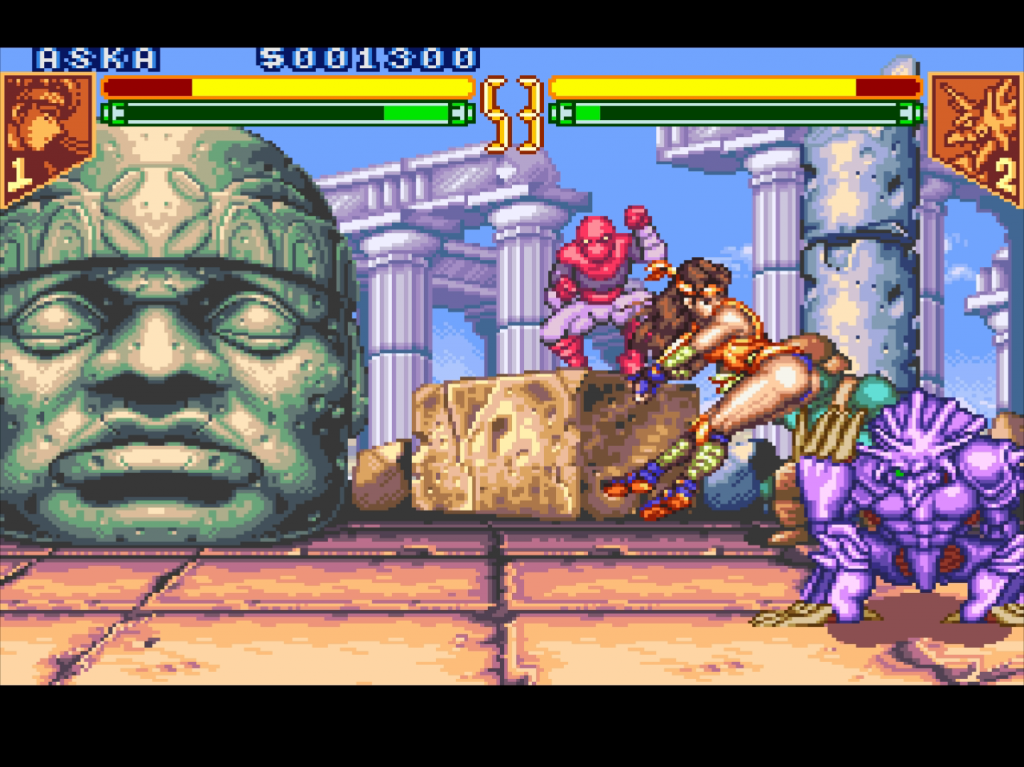
Japanese “butt bounce” attack
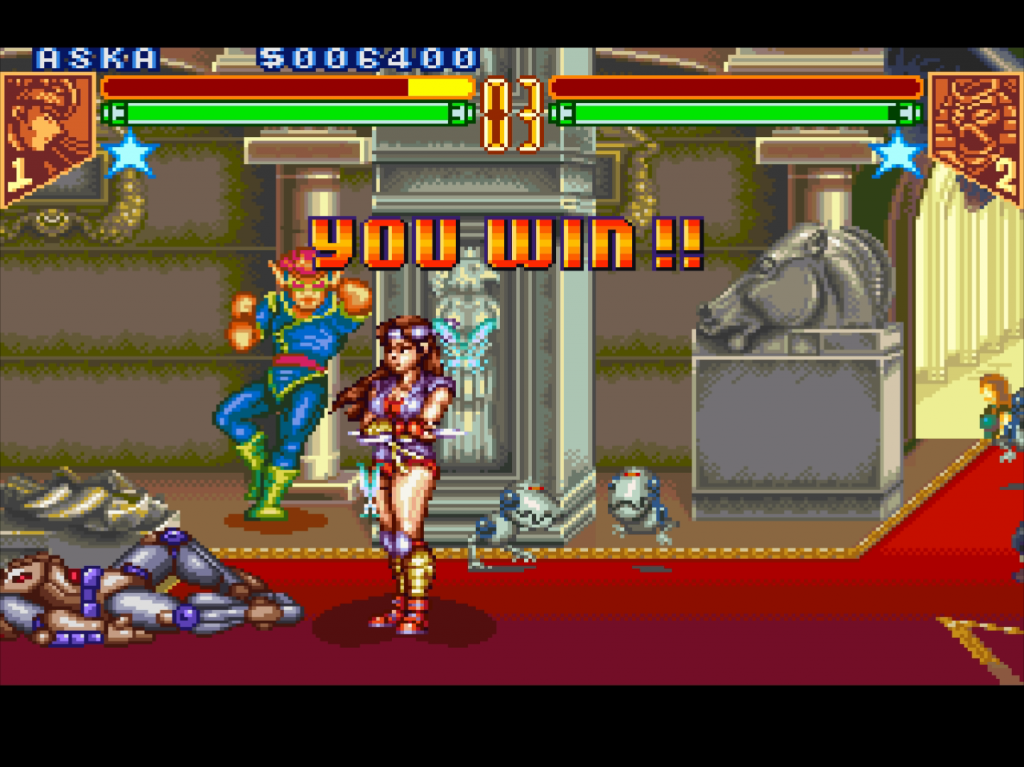
Original winning animation 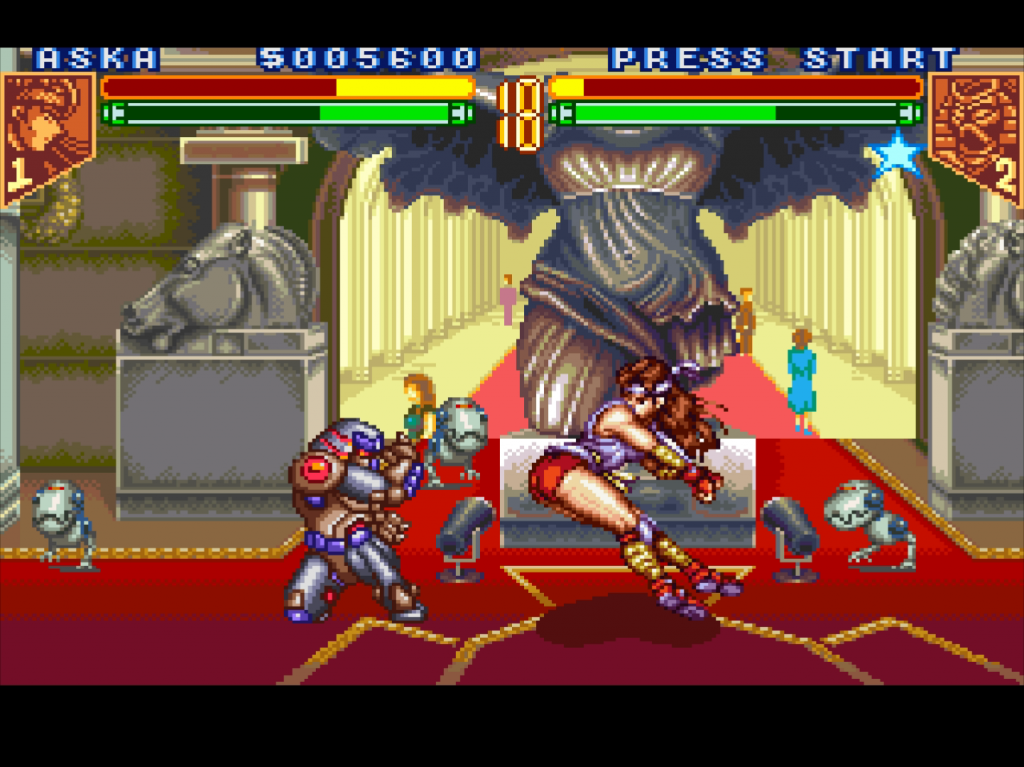
Original “butt bounce” attack

Original 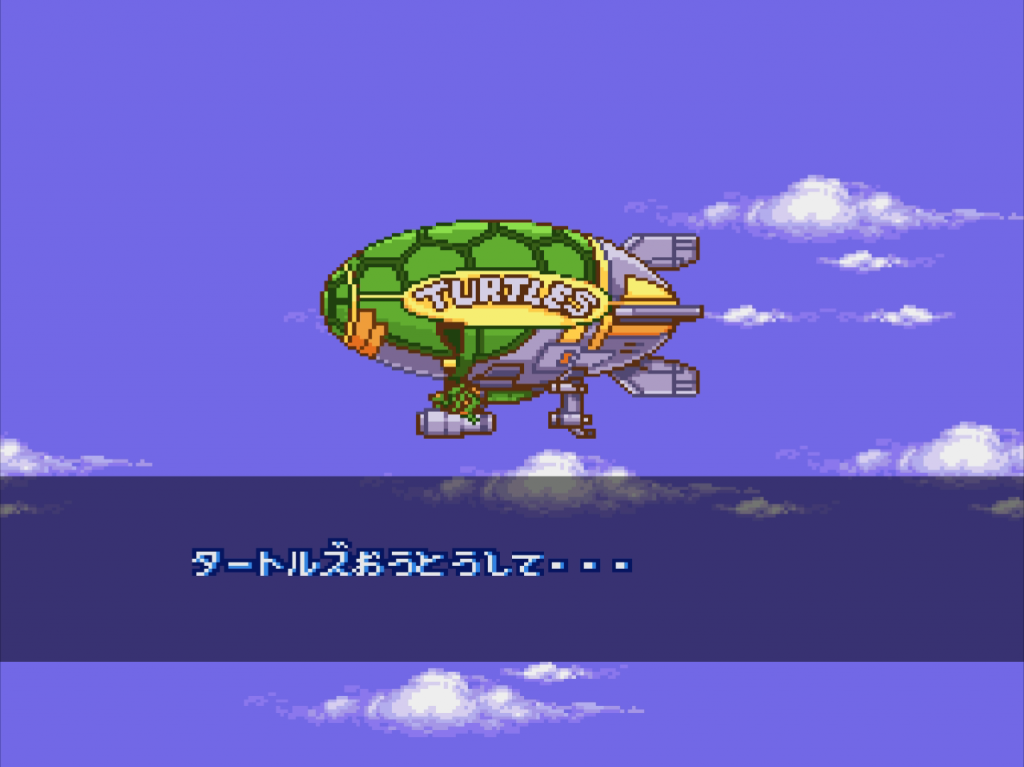
Japanese
There are also a few audio improvements and even a change to the Rat King’s stage to add a mechanic that expands it.
For the most part, it seems like they simply had a chance of a few extra weeks to work on the Japanese release. Aside from the changes made to Aska’s design, you might even wonder if the rest were simply a result of bugs that were not fixed for the original release.
Oh, and of course…
One additional variance, of course, is that thanks to the BBC being afraid of Ninjas in the 1990s, the PAL versions of the game actually go by the name Teenage Mutant Hero Turtles: Tournament Fighters instead...






